Triumph and Tribulations: Final Days in UK
Triumph and Tribulations: Final Days in UK
Abhi shares the third and final part of his UK adventure
We're back in England, which means our time in the UK is coming to a close. I try not to let that bum me out because there's still plenty to enjoy. In fact, less than half an hour after we hit the UK from the Isle of Man, we arrive at a road that is unusable 10 hours a day!
READ MORE: Triumph and Tribulations: Part 1 | RideApart
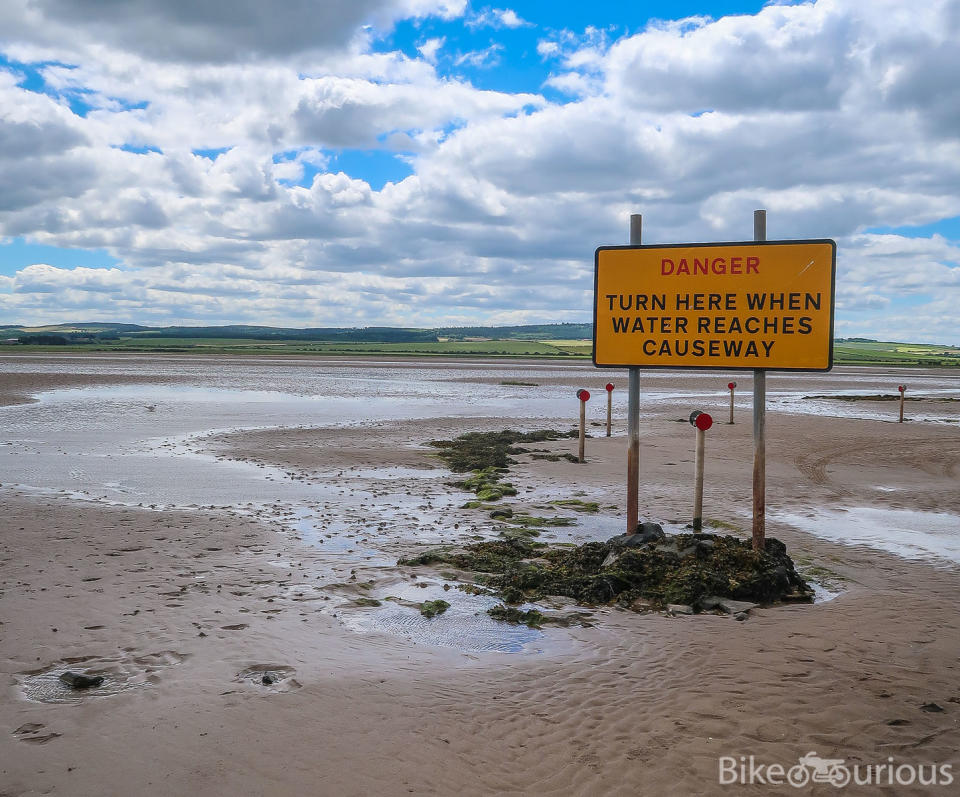
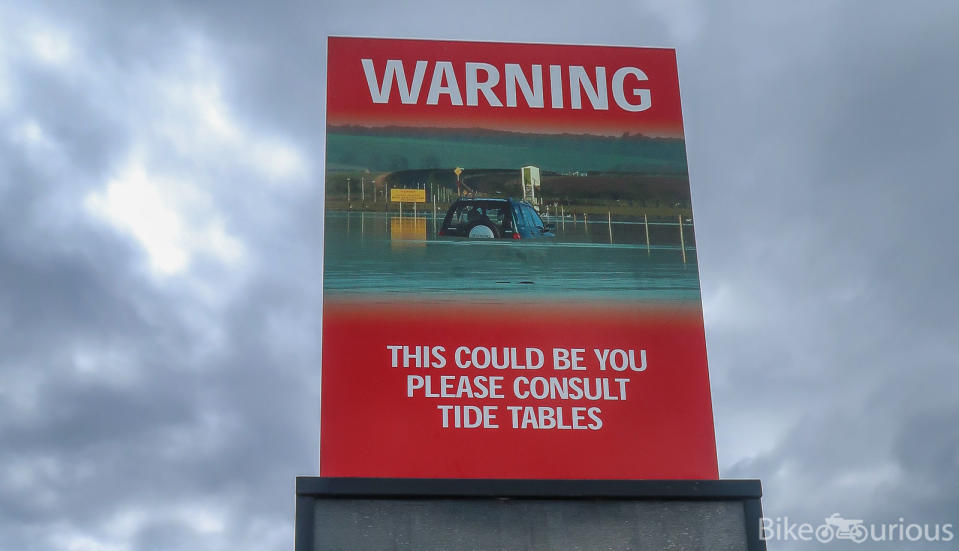
The island's population is just 160, though approximately 650,000 visitors come by each year. We can only spend a couple of hours before the road is closed due to the tide, but there's enough to see here if you wanted to spend a couple of days. The highlight is probably Lindisfarne Castle, which was built in 1550. Unfortunately, it is currently closed due to renovation work. So Vy and I just walk around and enjoy the quaint nature of the tiny island before hopping back on our Triumph and heading towards the mainland.
We can see water slowly creeping towards the road but again, no drama.
We continue the theme of ancient buildings with a stop at Hadrian's Wall. Also known as the Roman Wall, it was built over a 14-year period starting in 122 AD. At the time, it was the northern border of the Roman Empire, and it spanned 73 miles. Nearly 2,000 years later, you can still visit portions of the wall, so that's what Vy and I decide to do.
READ MORE: Triumph and Tribulations: Part 2 | RideApart
Our waitress at lunch suggests we stop by the famous tree at Sycamore Gap, and we take her up on the suggestion. On the way, we ride through the village of Once Brewed (which is also known as Twice Brewed). Weirdly, if you enter town from the east, you'll see the town name of "Once Brewed". If you come from the west, you'll see "Twice Brewed". There's a few versions of why this discrepancy exists - but a popular explanation is that soldiers who were about to take part in the Battle of Hexham in 1454 asked for their beer to be brewed again so it would be up to "fighting strength." This makes no sense to me because brewing beer is not a quick process, but it's a cute story so I'll let the lie continue.
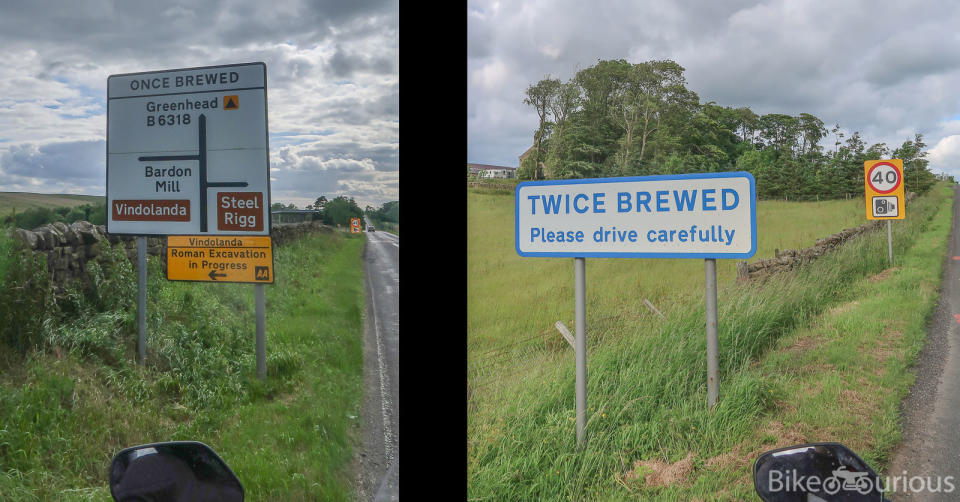
The tree at Sycamore Gap because famous after it was featured in Robin Hood: Prince of Thieves. To get there, you have to hike. There are two options: a flat indirect route, and a hilly route along Hadrian's Wall. Vy and I decide to take the latter, because she likes hiking and I like her more than I hate hiking. Barely.
If you needed a reminder from Part 2 of this story, there are sheep everywhere.
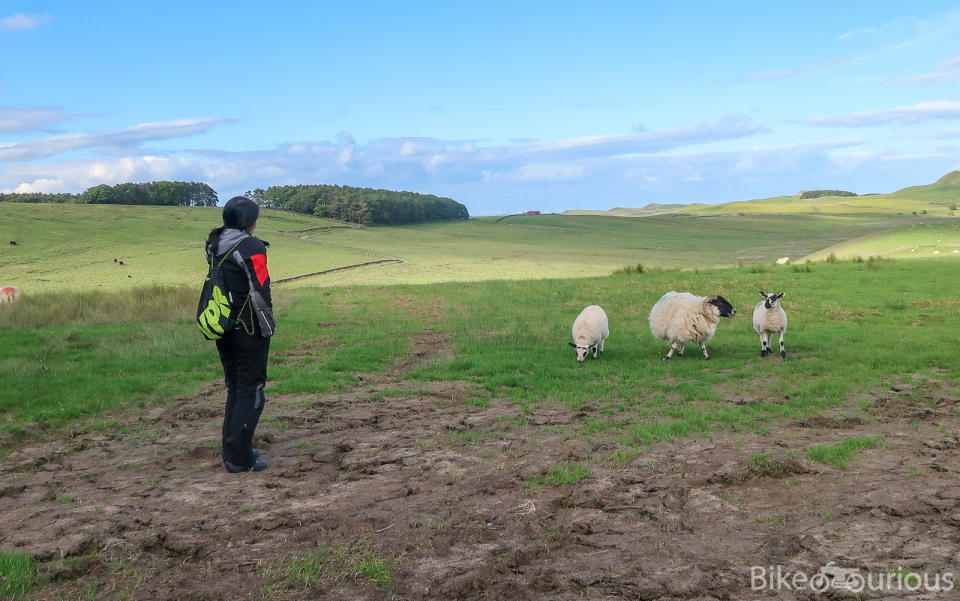
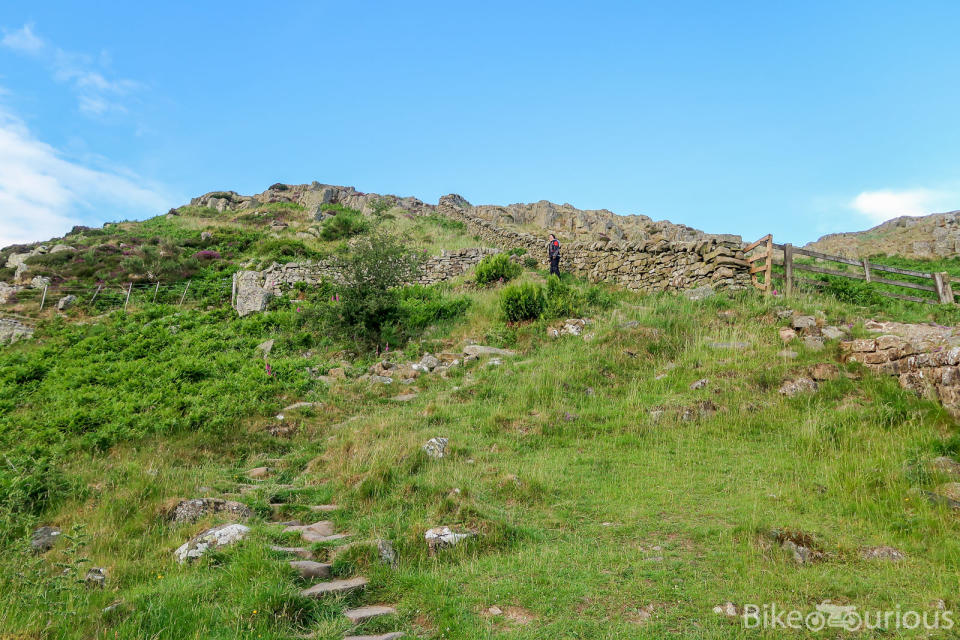
Every Roman mile (approximately 4,850 feet versus the 5,280 feet in a modern mile), Hadrian's Wall has a series of small forts that are called milecastles. You can probably guess how the name came about. In general, each milecastle functioned as protected gateways and they housed 20-30 soldiers.
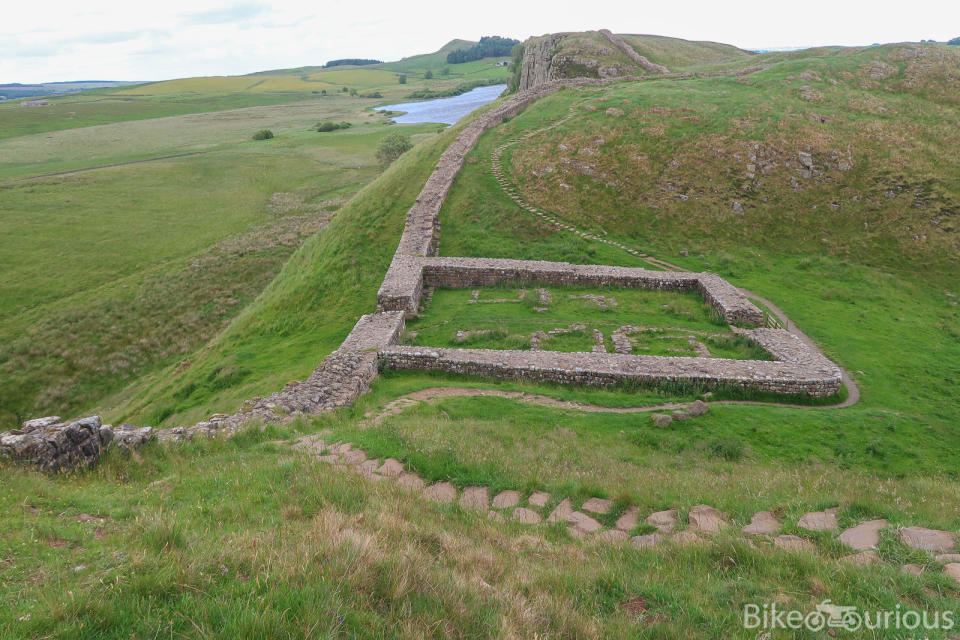
Voila - England's Tree of the Year for 2016. Yes, apparently that's a real award.
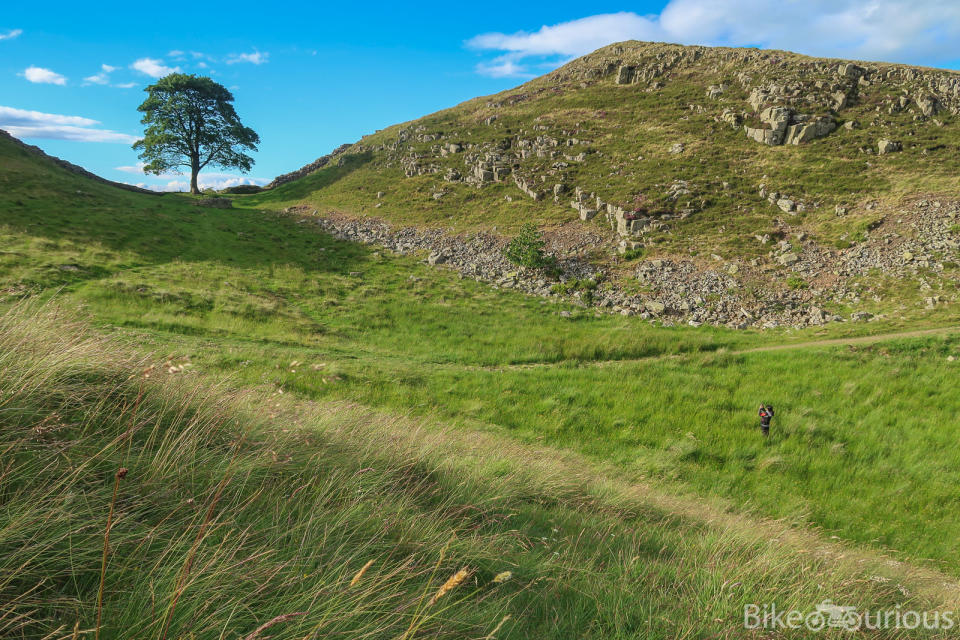
At this point in the hike I try to imagine what it must have been like to be an enemy of the Romans hundreds of years ago. It's one thing to worry about conquering a wall that could be up to 20 feet tall. It's another thing when said 20 feet are added to 100+ feet of natural elevation change.
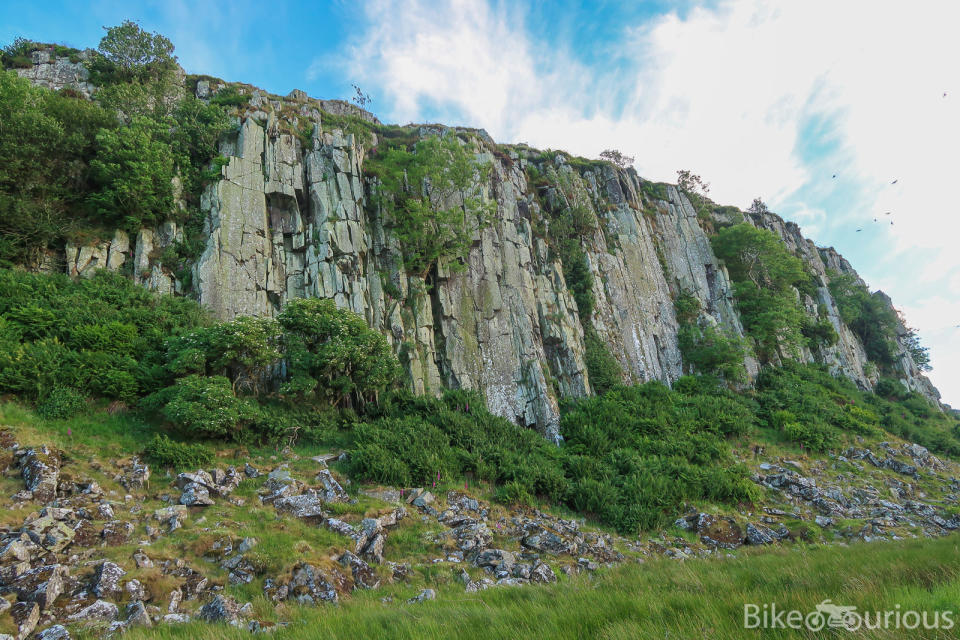
Our hike takes so long that all the other forts that are normally open to the public have closed. Still, at the next one we notice a sign with some important life advice.
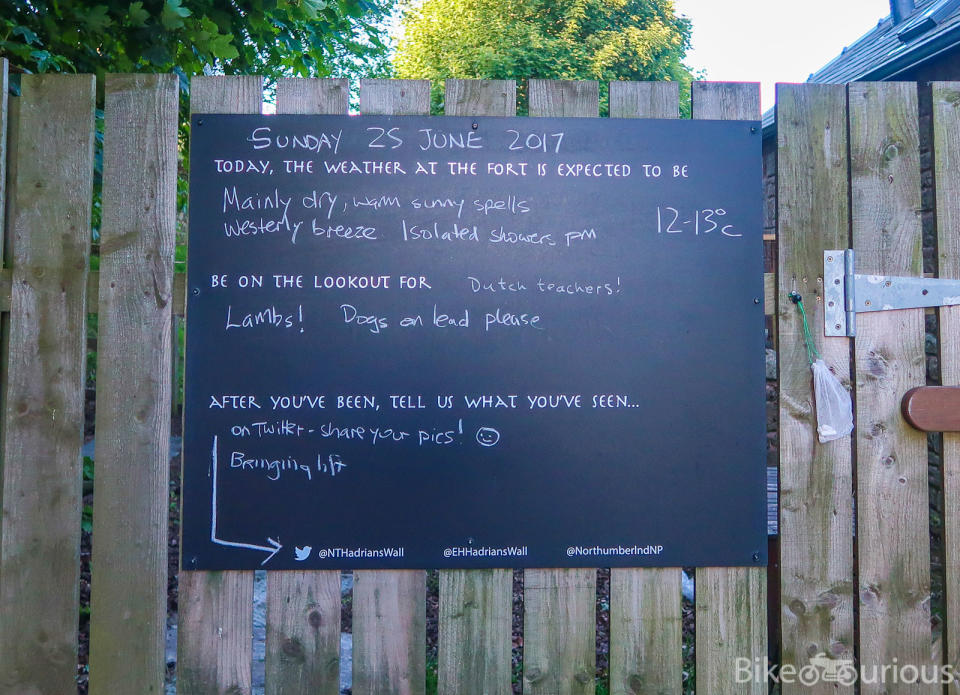
We hit the road again and make our way west. I'm happy with the power and comfort of our Triumph Tiger Explorer loaner but if I do this trip again I'll probably use a smaller bike. Most of our trip is on smaller B roads (For those of you playing along in the States, a B road is a narrow country lane, often only wide enough for a single car –Ed), so the big motor isn't required, and there are a few times in twisties and in village centers when I would prefer a lighter, more maneuverable mount.
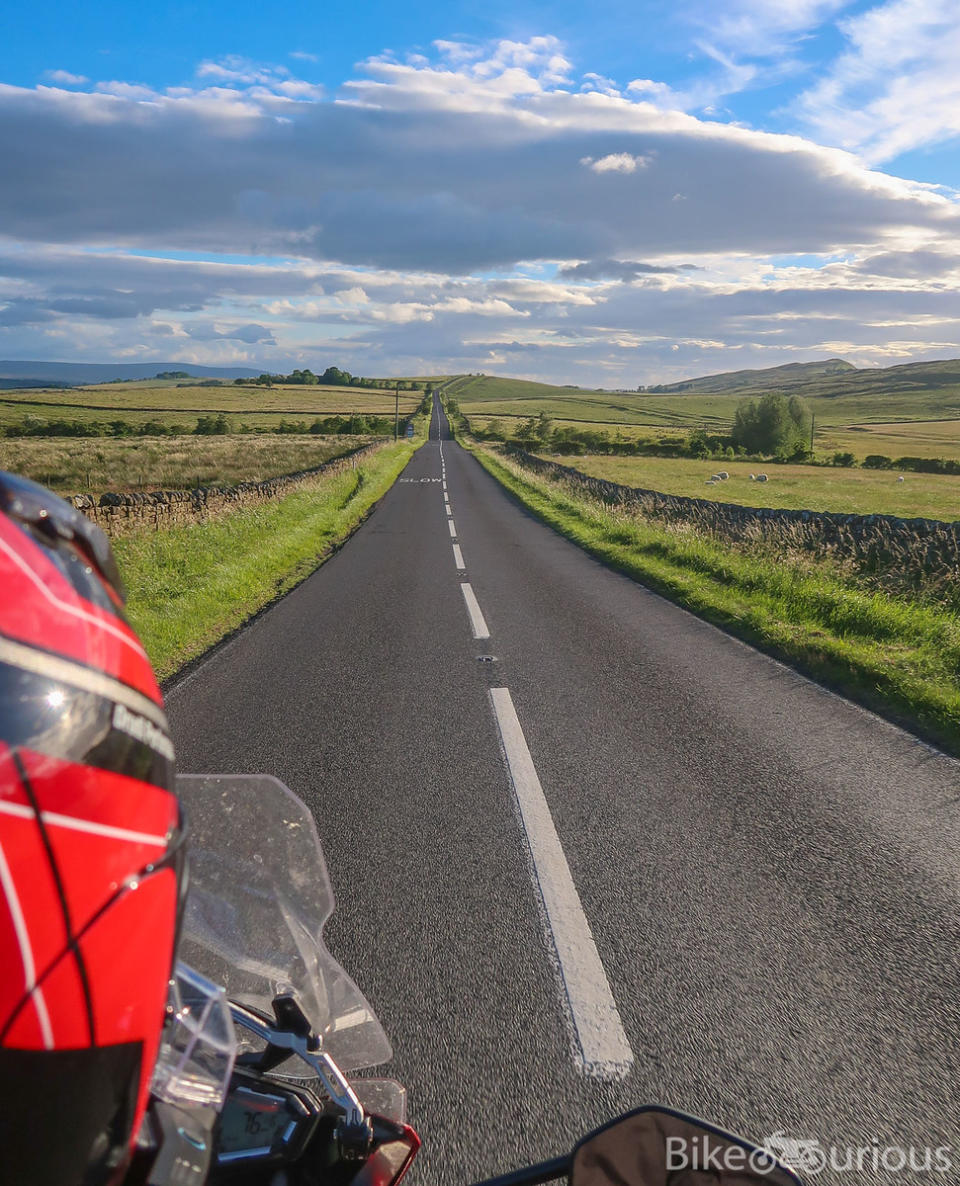
Speaking of village centers, our first stop the next day is Grasmere - William Wordsworth called it "the loveliest spot that man hath ever found." We stop in town to check out the famous gingerbread shop. While in line, I notice that someone has taken a bit of interest in the Triumph.
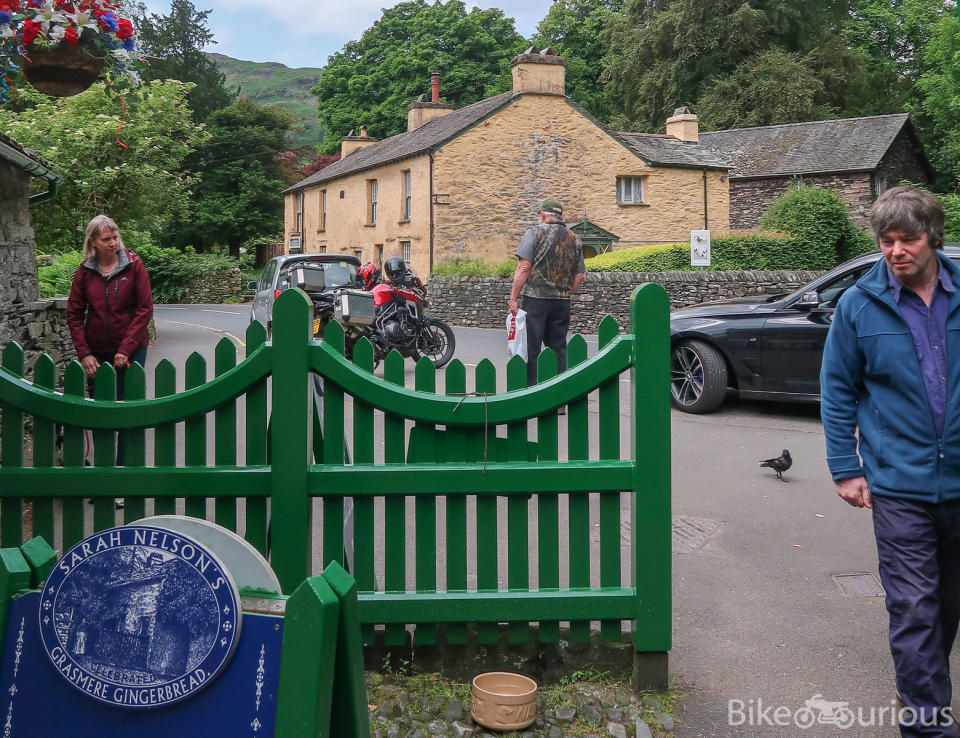
Per usual with tourist traps, the employees dress up in costume.
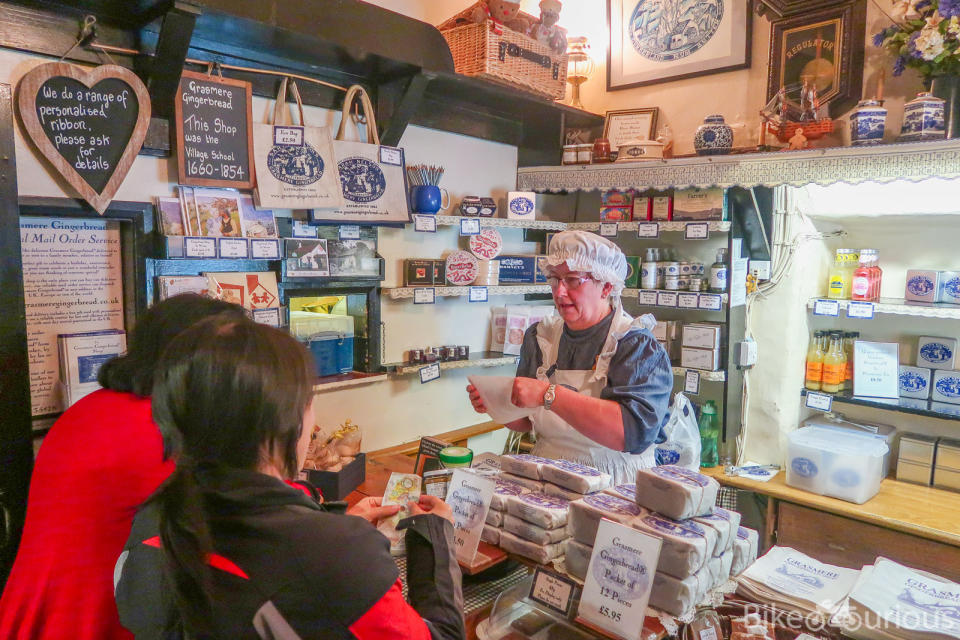
Crossing back across the country, we make our way through the Yorkshire Dales. Guess what? We saw more sheep! But this time they are incredibly close to the road.
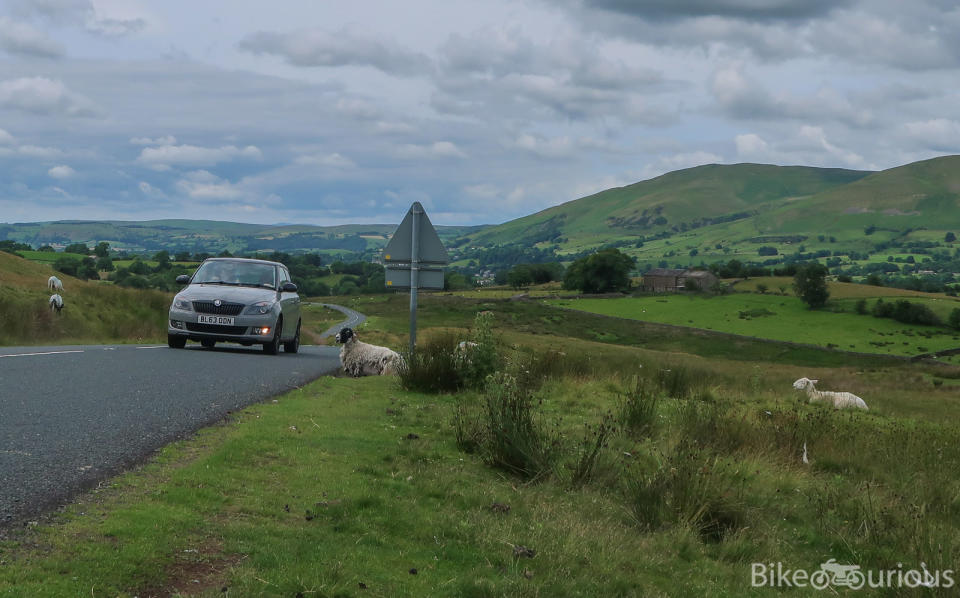
Something you don't see very much in the United States: a trailer being towed by a classic sedan.
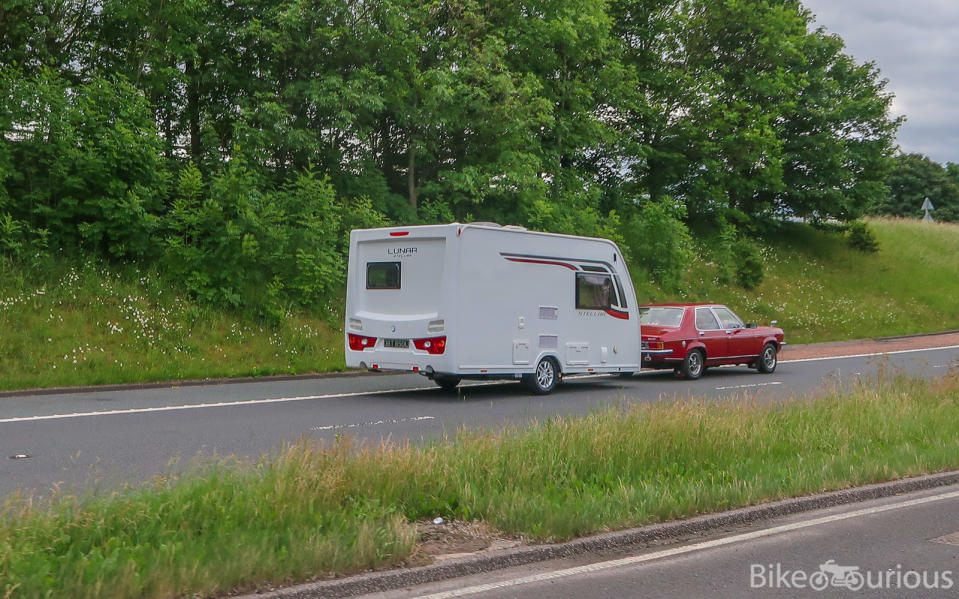
This sign caught our attention. Unlike with the car above, I'm able to identify the bike. If you need a hint, think Italian.
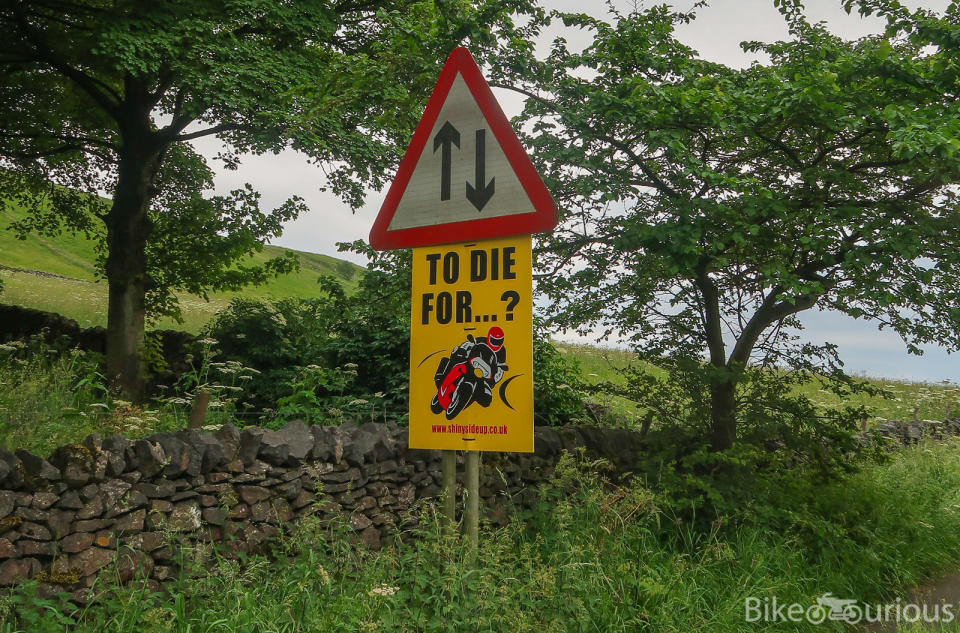
At our next stop, I had a much more difficult time identifying the bikes. The National Motorcycle Museum in Solihull contains the world's largest collection of British bikes. There are five halls with more than 170 manufacturers represented and 1,000 motorcycles. Here's a few of my highlights but you'll really need to spend a full day here.
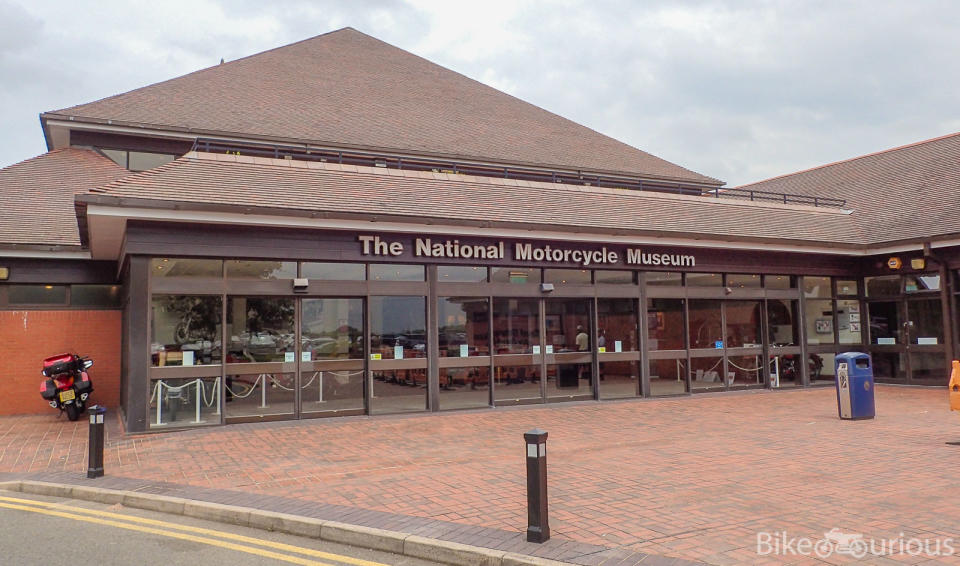
As you enter, the free-to-access lobby gives you a taste of what you can look forward to, like this Silk 700S.
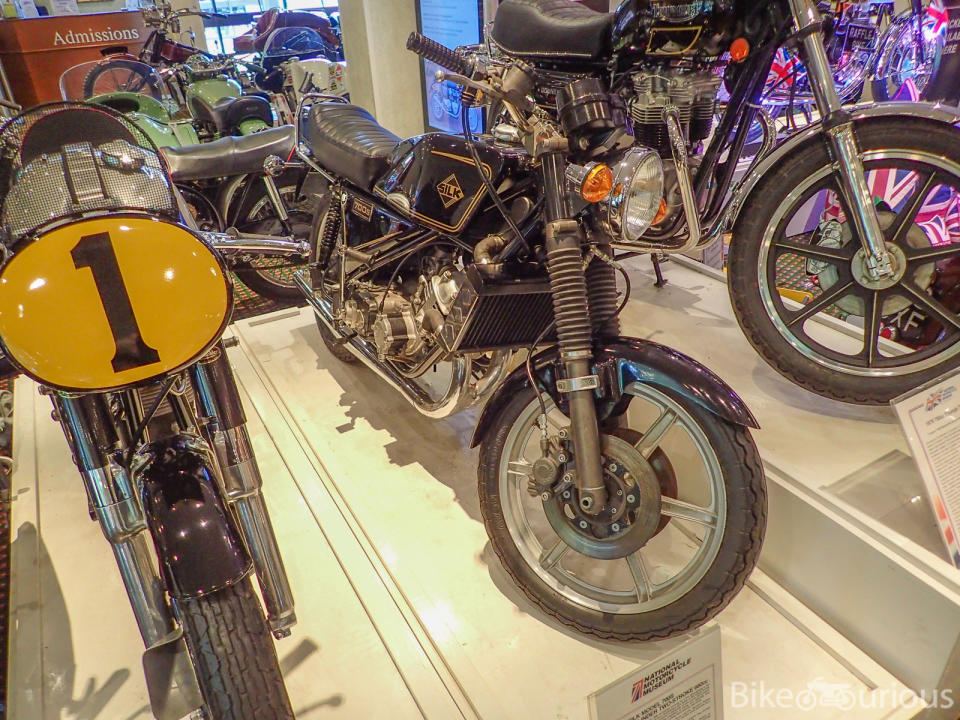
A 1912 Wilkinson TMC Series V.
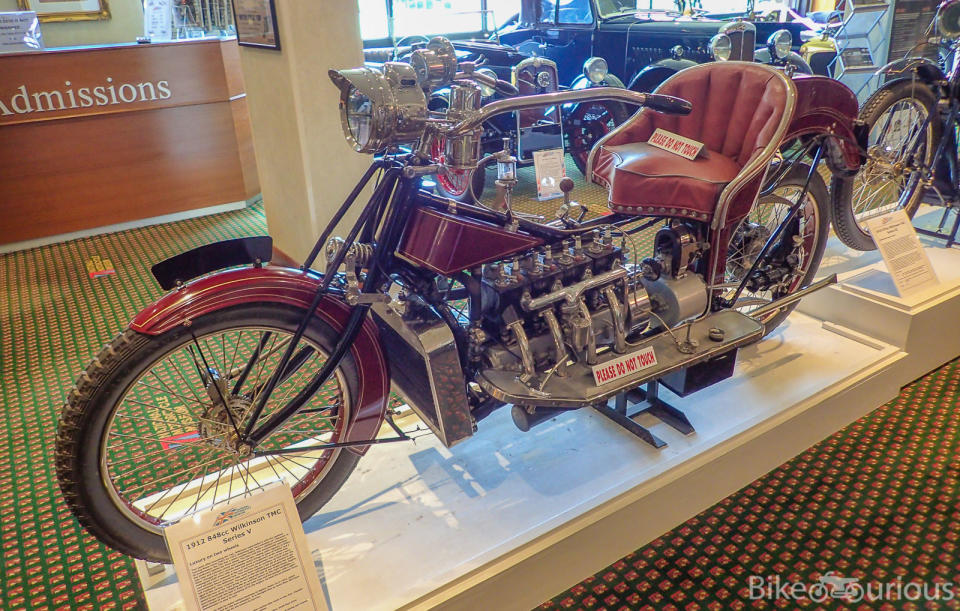
A large chunk of the foyer's real estate is consumed by a raffle for a BSA Goldie.
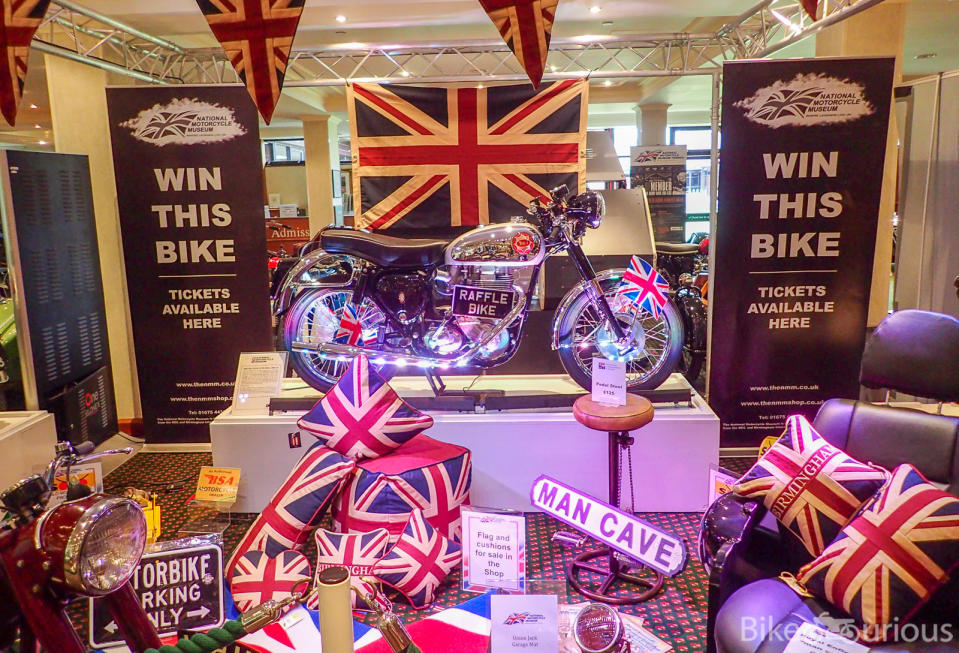
I buy a ticket for the museum but not for the raffle and head into the exhibits. Hall 1 is the older stuff, built between 1898-1960. The bikes are on display in chronological order, and I start with a 1898 Beeston Humber trike.
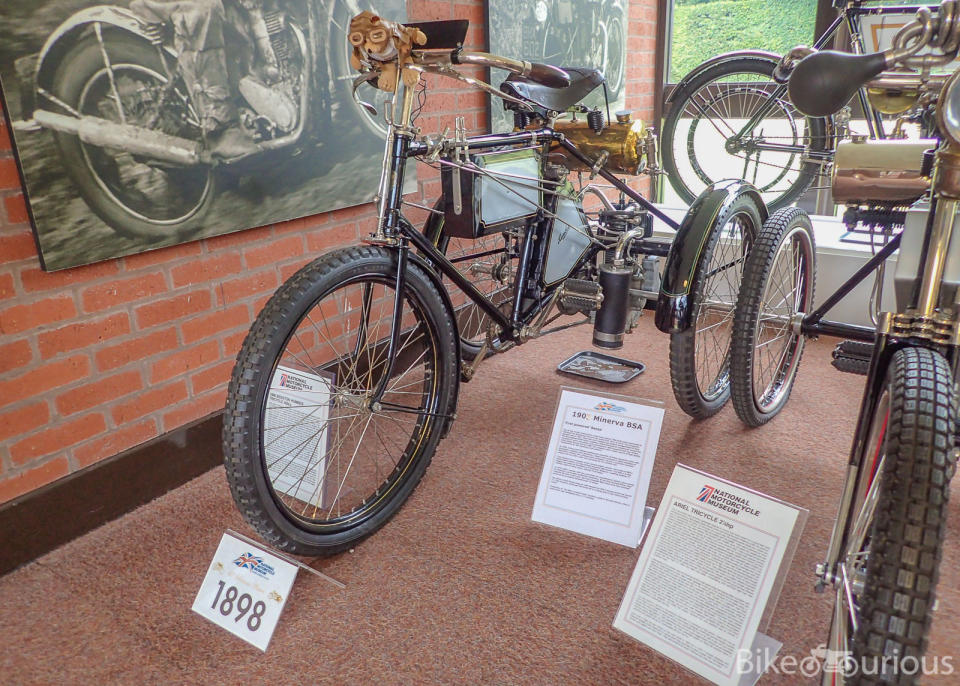
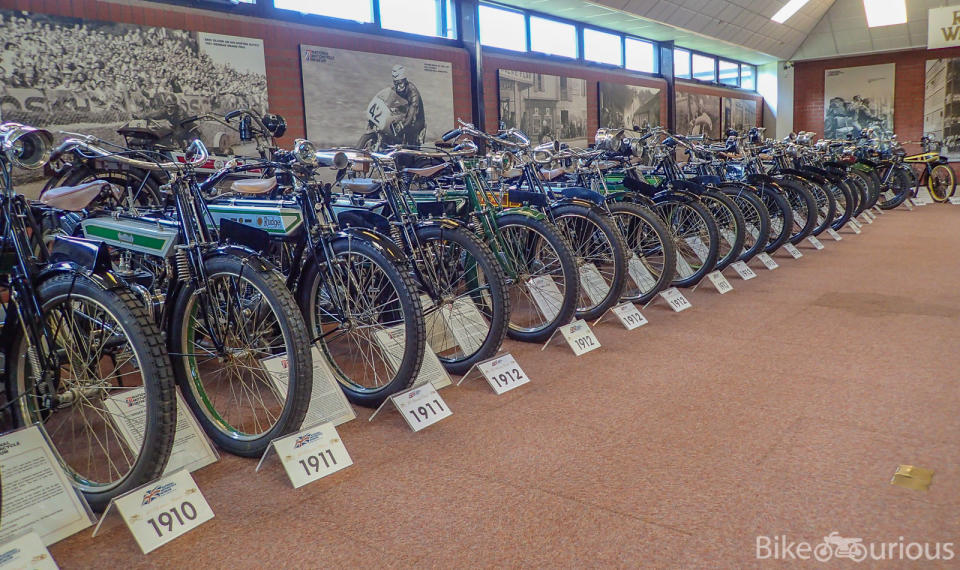
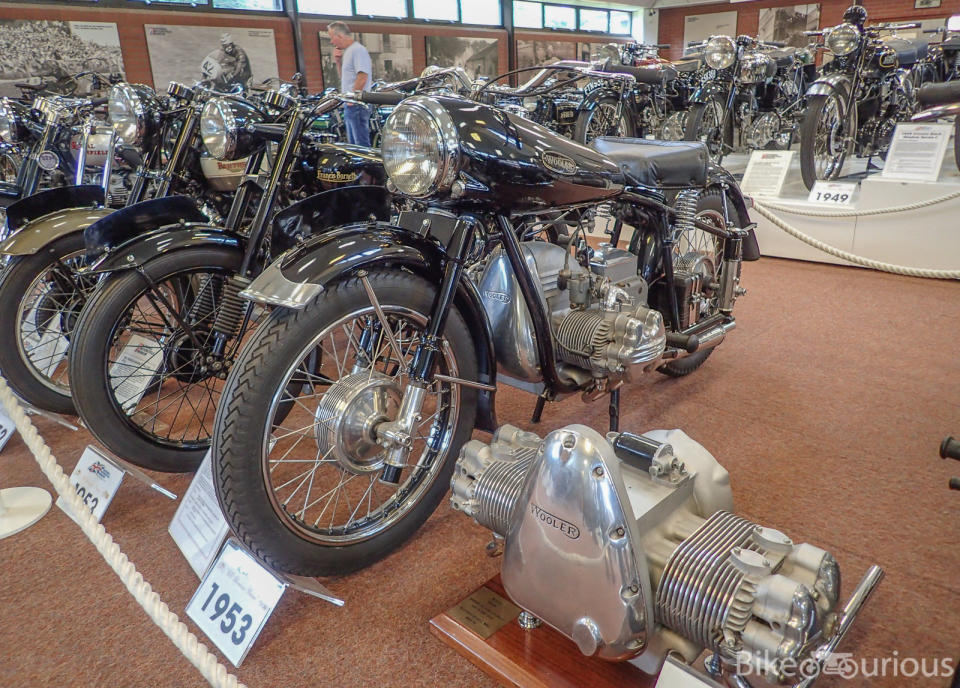
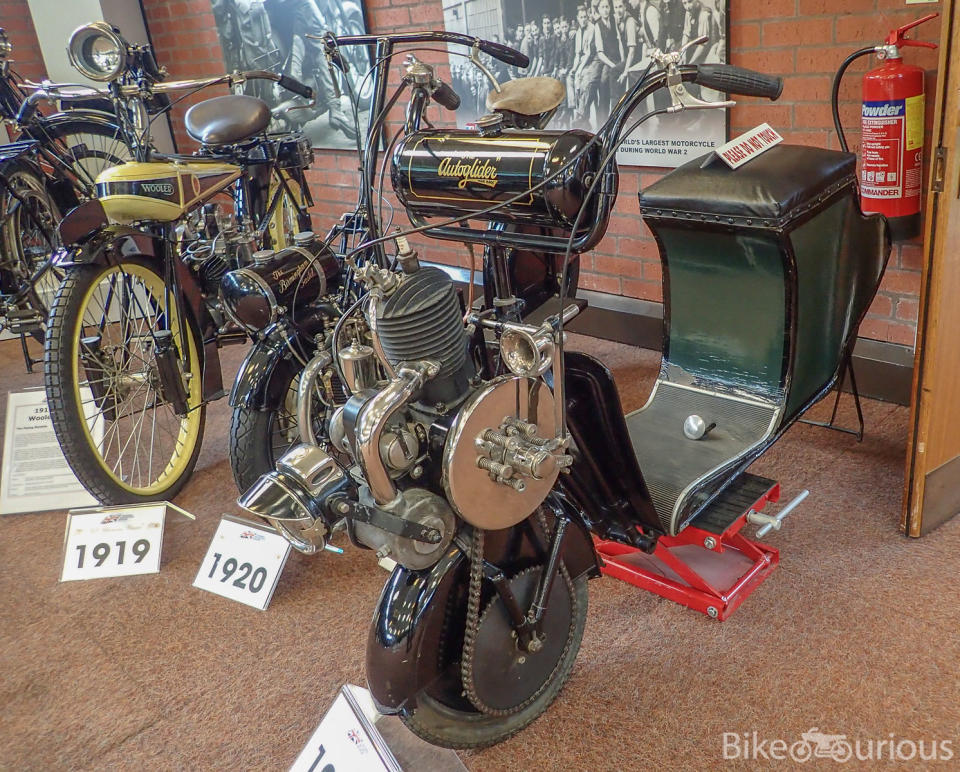
Halls 2-4 are sorted alphabetically by manufacturer name. Hall 2 simply runs from A-C, though BSA is omitted. There are some special displays for military bikes, "working" bikes (police/ambulance), a photo studio that is dedicated to a special machine, and 22 prototypes.
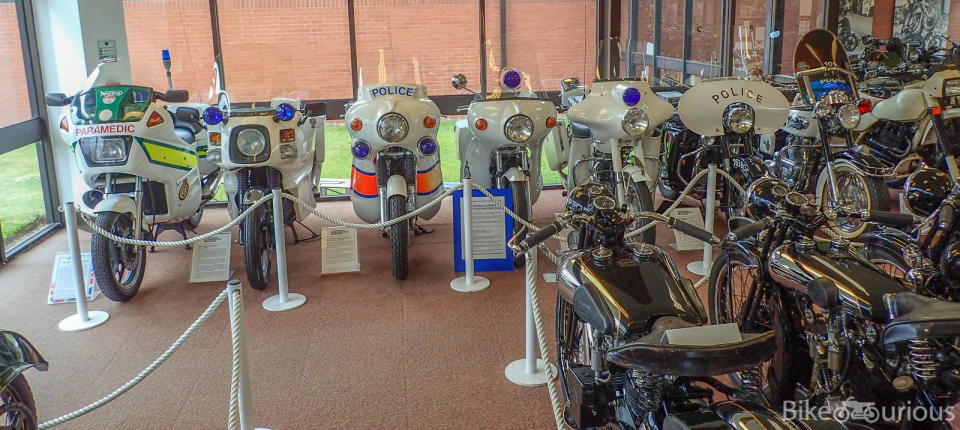
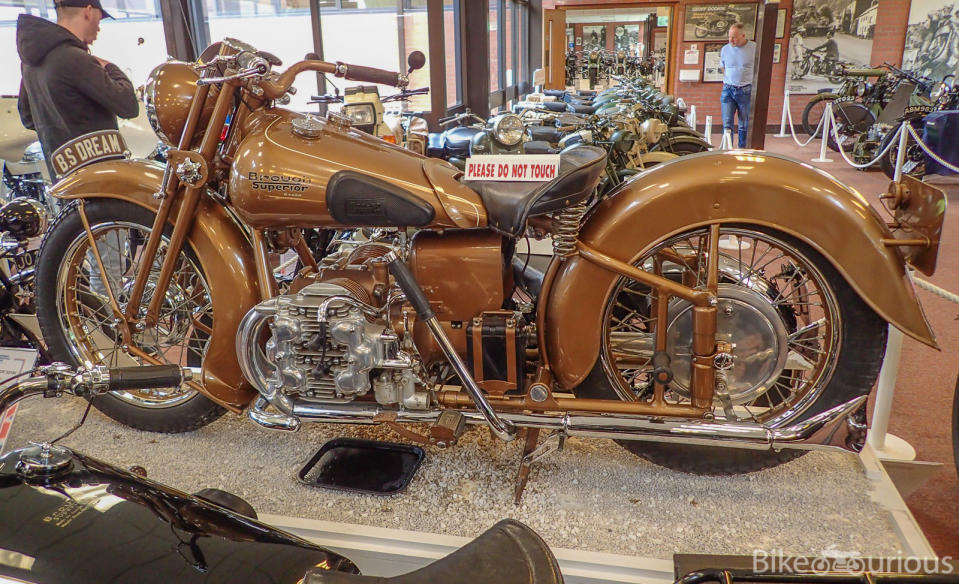
During my visit, the photo studio displays a 1963 Marsh MR4. It's got a great history - a shipyard worker in Southampton named Fred Marsh decided he was sick of the Italians beating the English in 50s Grand Prix racing, so he did something about it.⠀
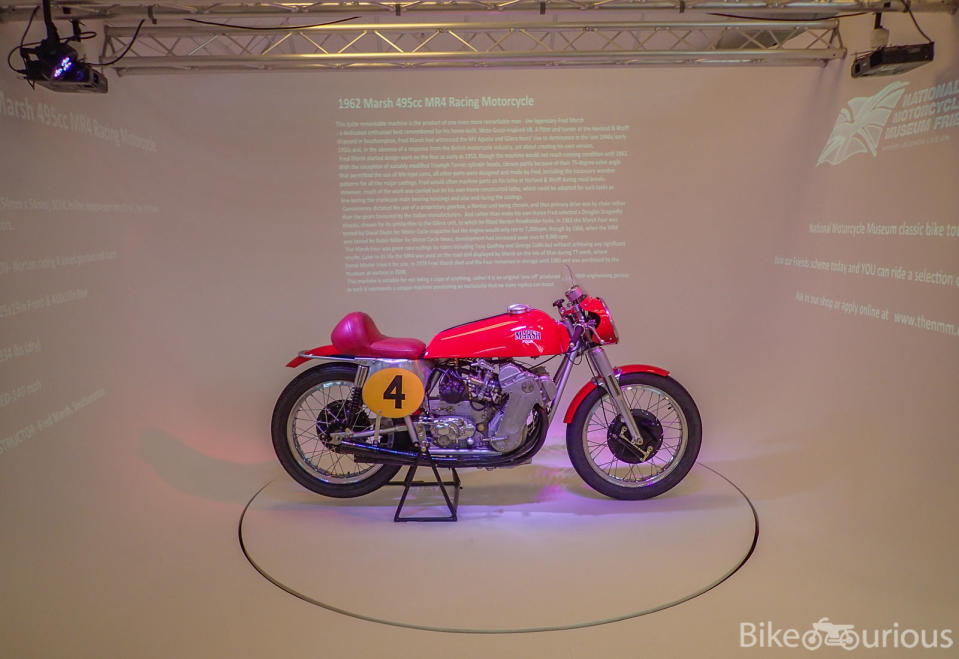
Obviously, not much came from this, but Motor Cycle News tested it in 1966 and was able to wring out 9,000 rpm from the motor, a 500cc in-line four. Per the museum, Marsh ended up moving on to a V8 project before he really finished this bike.
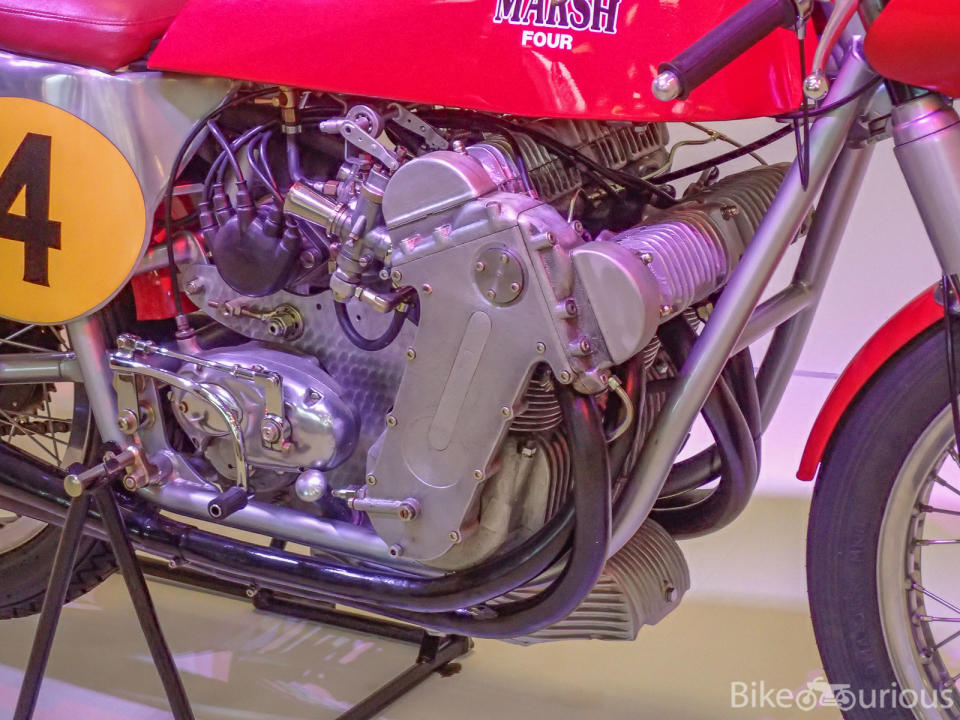
Commando fans, here's your chance for a double take. Yes, that says 900.
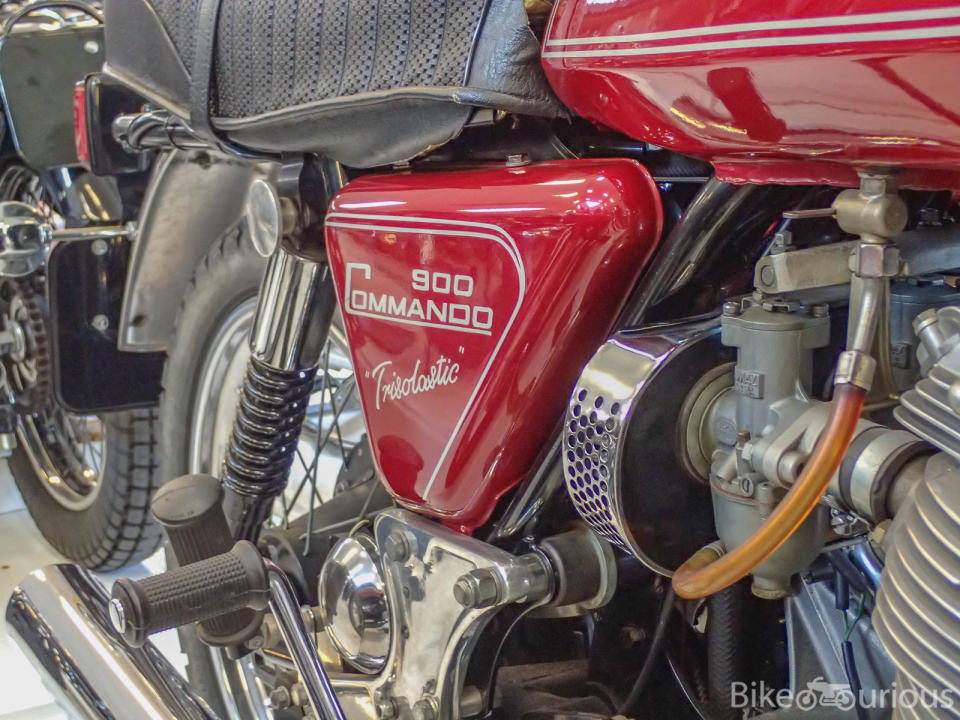
One of the most absurd bikes at the museum is another Norton prototype - the Nemesis. Conceived in 1998, it featured a 1,500cc V8 that was claimed to put out 235 hp and 111 lb-ft of torque paired with a push-button transmission and F1-inspired active suspension. Claimed top speed? 225 mph. Of course, it was all just a bunch of claims, and the British rag MCN has since called it one of the greatest hoaxes in motorcycling.
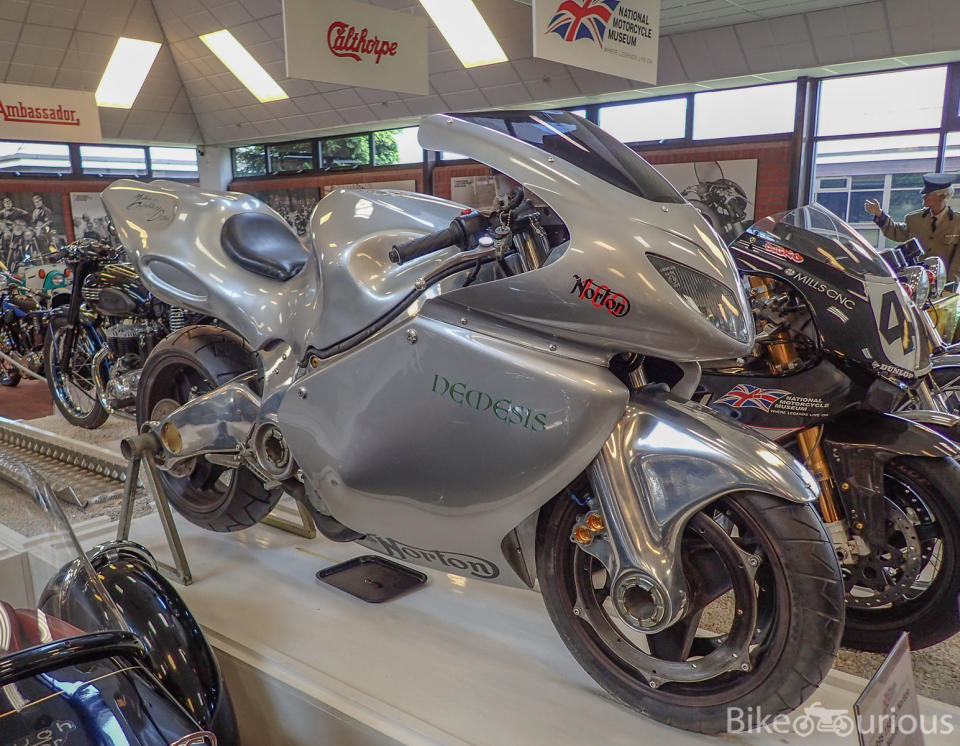
1914 Clyno Sidecar. Built for WWI, this has a legendary reliable Vickers Maxim machine gun.
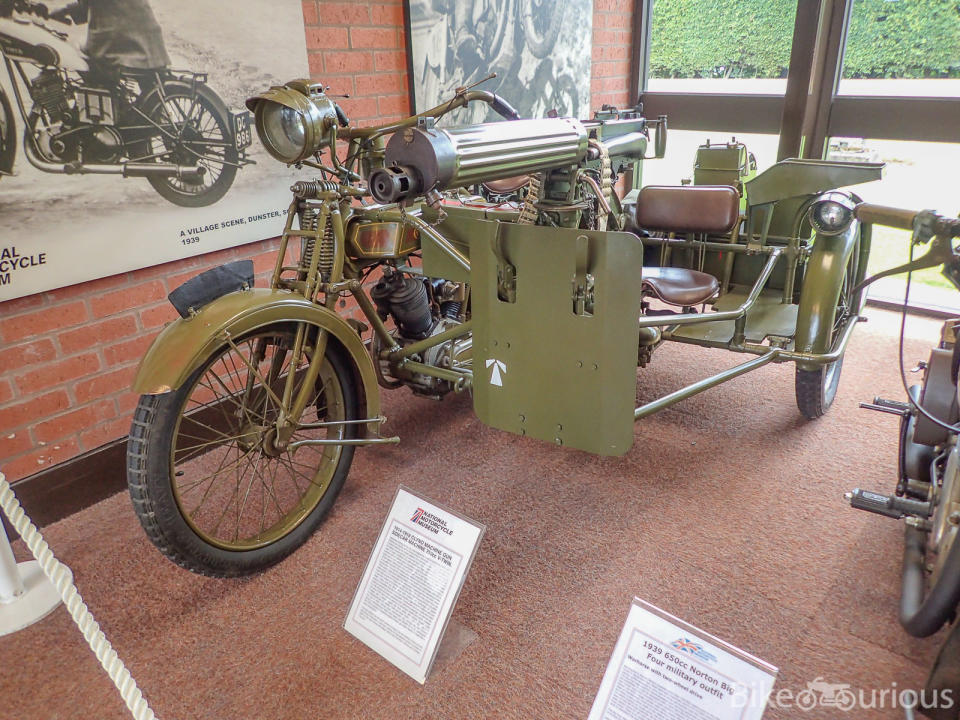
Another fascinating military bike is the Welbike, which was designed to be dropped out of planes in parachute-equipped containers that would fall safely to earth. That was the theory - turns out there were plenty of problems that made it impractical for wartime service.
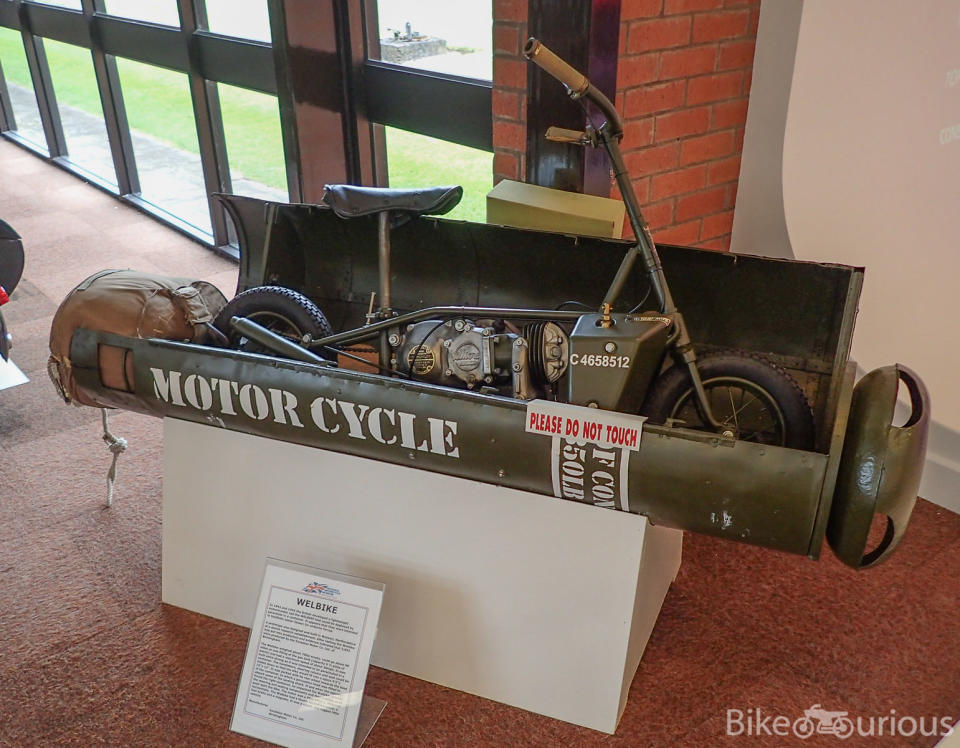
Hall 3 is for BSA and then for D-N (but not Norton). I can barely keep myself away from the Heskeths, starting with a couple of Vampires. Just 40 were built and two are in front of me. The original V1000 had its flaws, but at least it was good looking. The Vampires (V1000s with a full fairing, if I'm allowed to oversimplify) are so ugly it's almost charming.
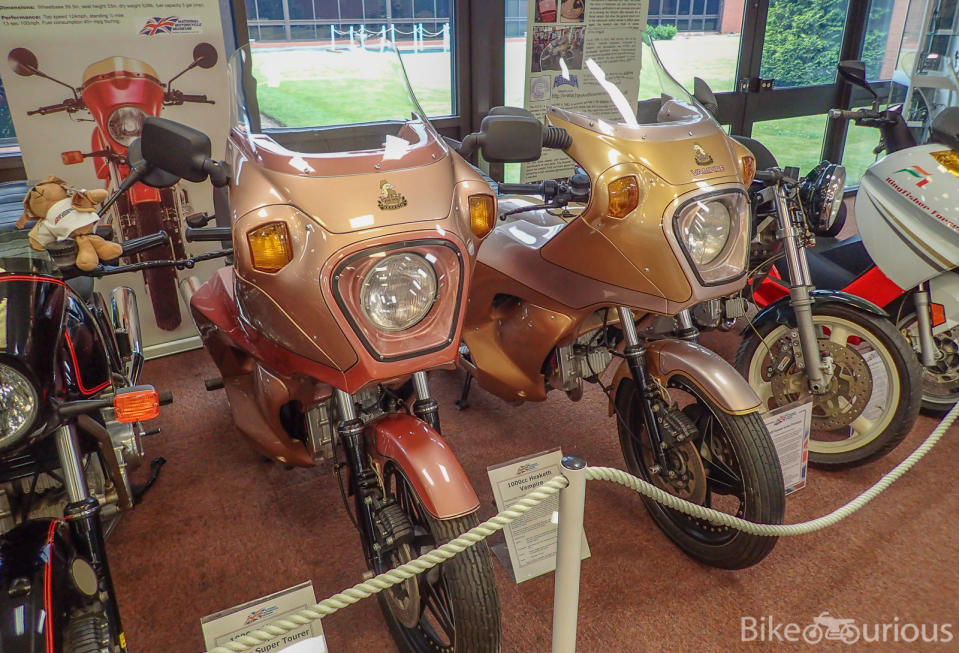
In 1989, Mick Broom built a prototype called the Vortan. Eight deposits were received, which wasn't enough to go into production. This bike also illustrates my only real complaint about this museum - there's not enough room so all the bikes are packed together. There are lots of fascinating details that I want to take a closer look at, but it's not possible. Woe is me.
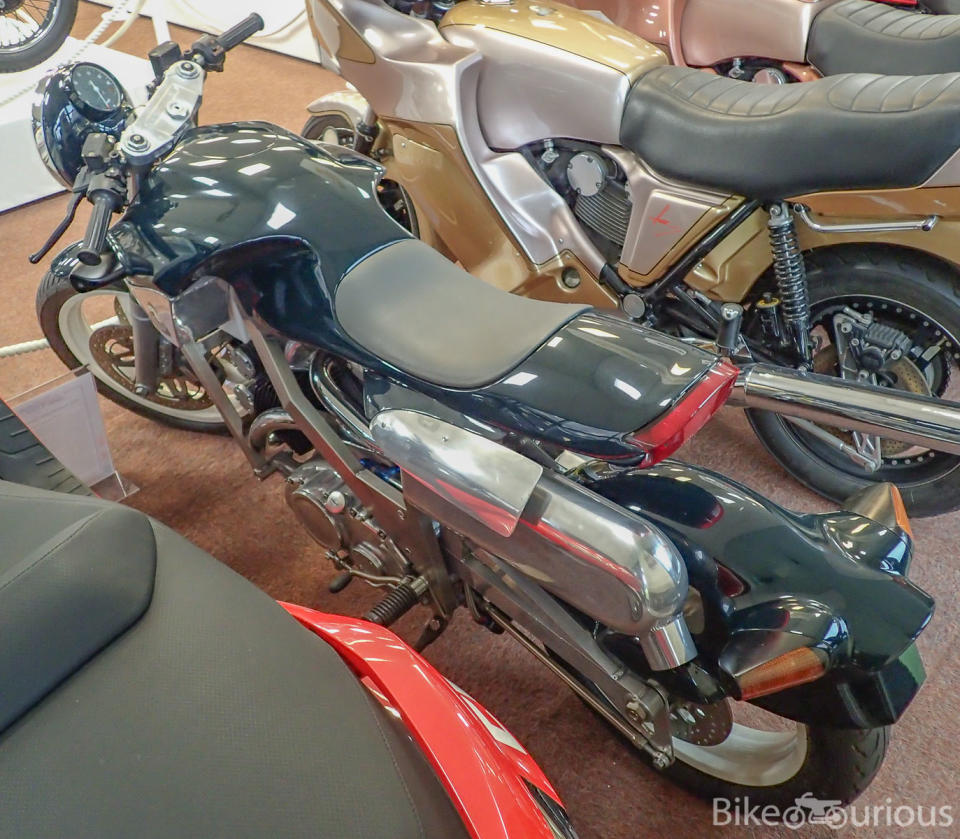
Hall 4 is for Norton and the rest of the alphabet.
READ MORE: Why British Riders are Better | RideApart
Norman Hyde was a draftsman at Norton Villiers Triumph when it collapsed in 1975. He started his own shop and by '88 he was producing his own bike, called the Harrier. The idea was that he'd take a inline triple from the Trident 160 and put it in a sport bike frame. 62 horsepower won't throw your head back but for a select few it is the perfect combination of classic motor and modern handling. Doesn't hurt that it looks like a '70s endurance racer, either!
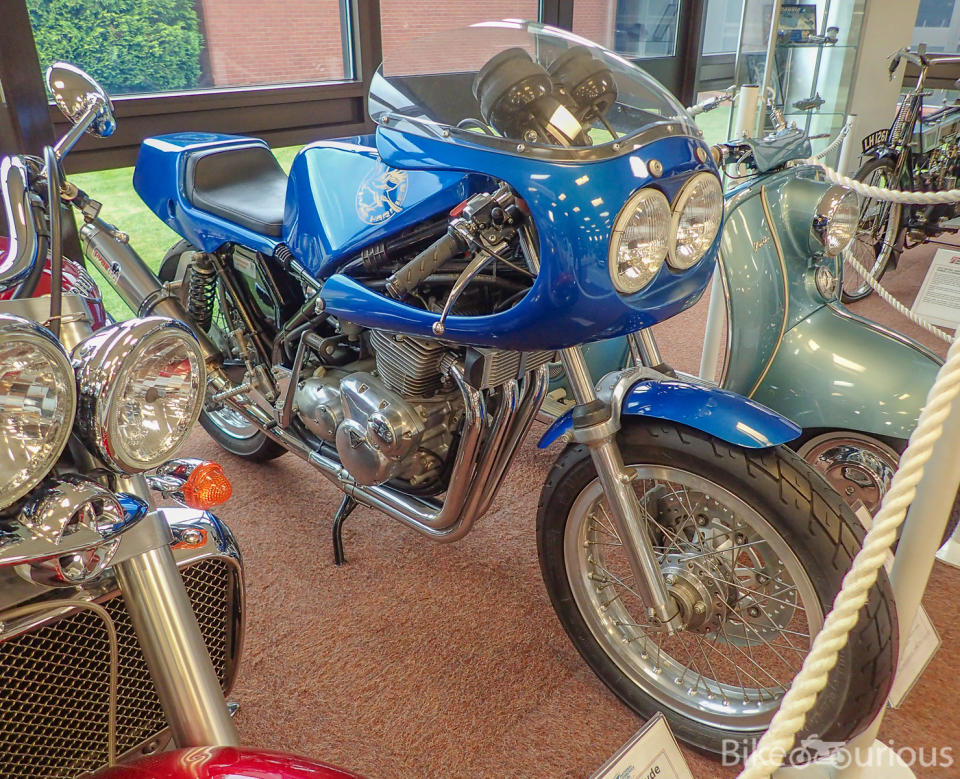
A timeline of Nortons.
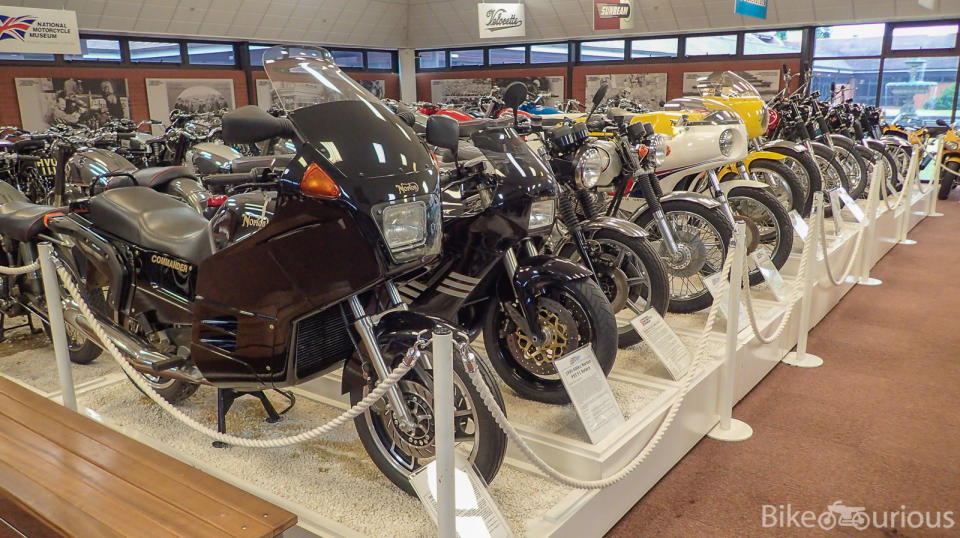
All that Norton history starts here with their first bike, the Energette.
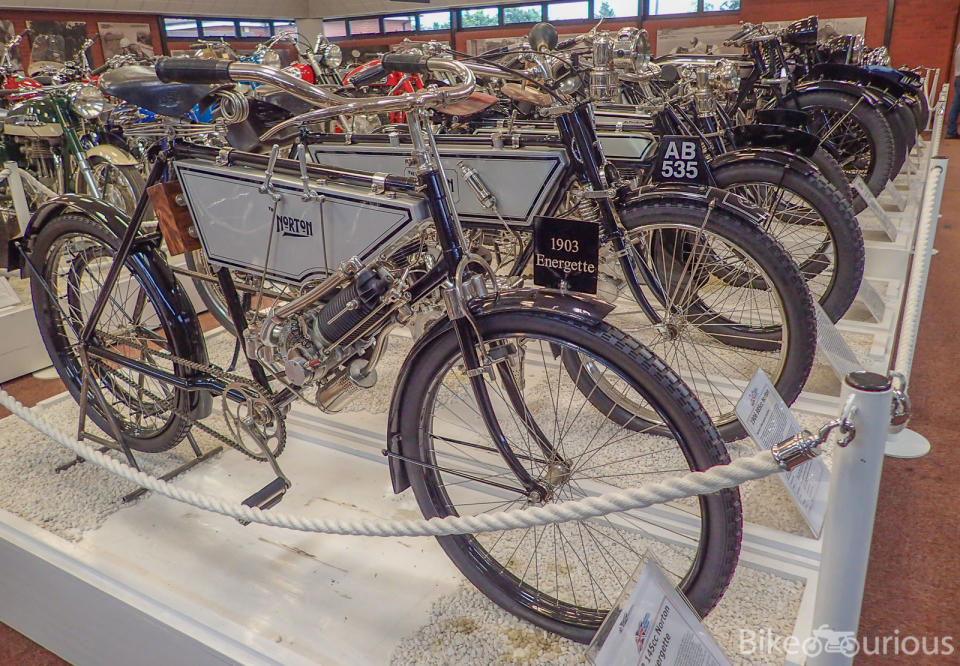
Let's get a closer look at that motor.
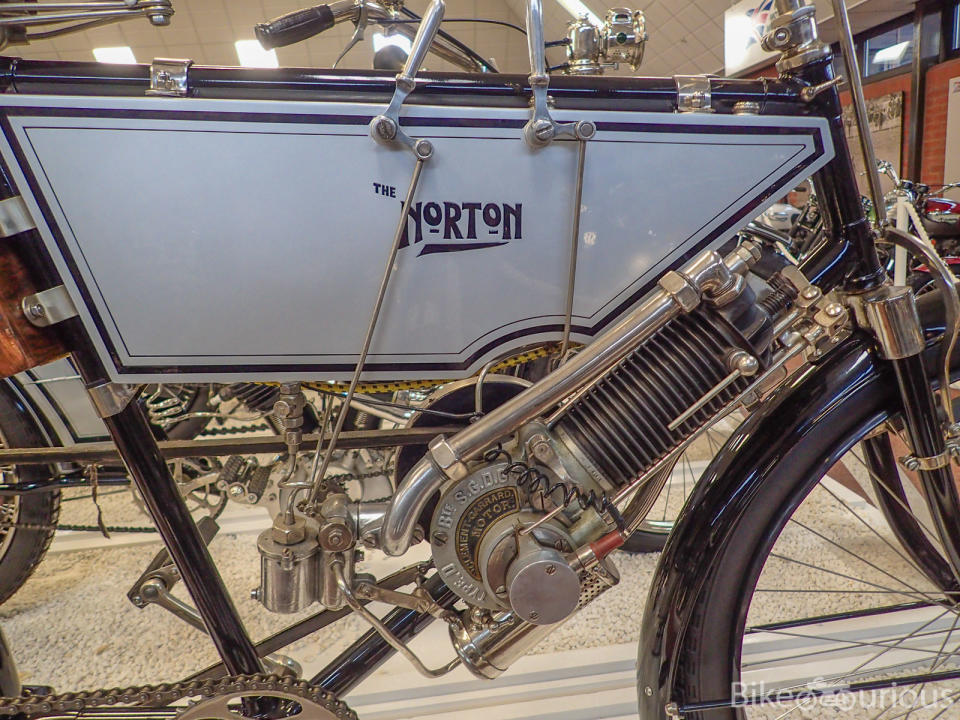
The Nortons are wonderful but Hall 5 is easily my favorite. This hall is dedicated to race bikes and world record breaking motorcycles.
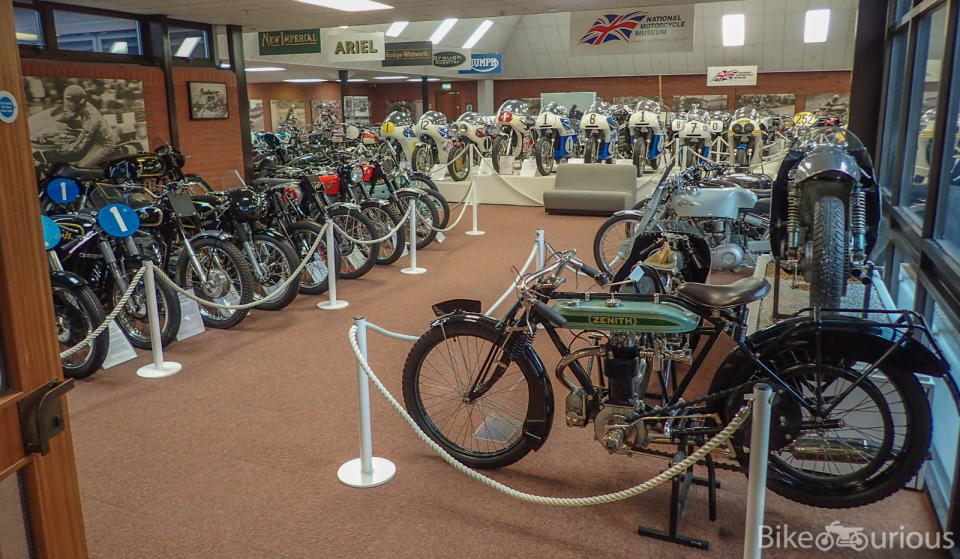
This is a 1929 Chater-Lea frame that became known as "Copperknob" for obvious reasons.
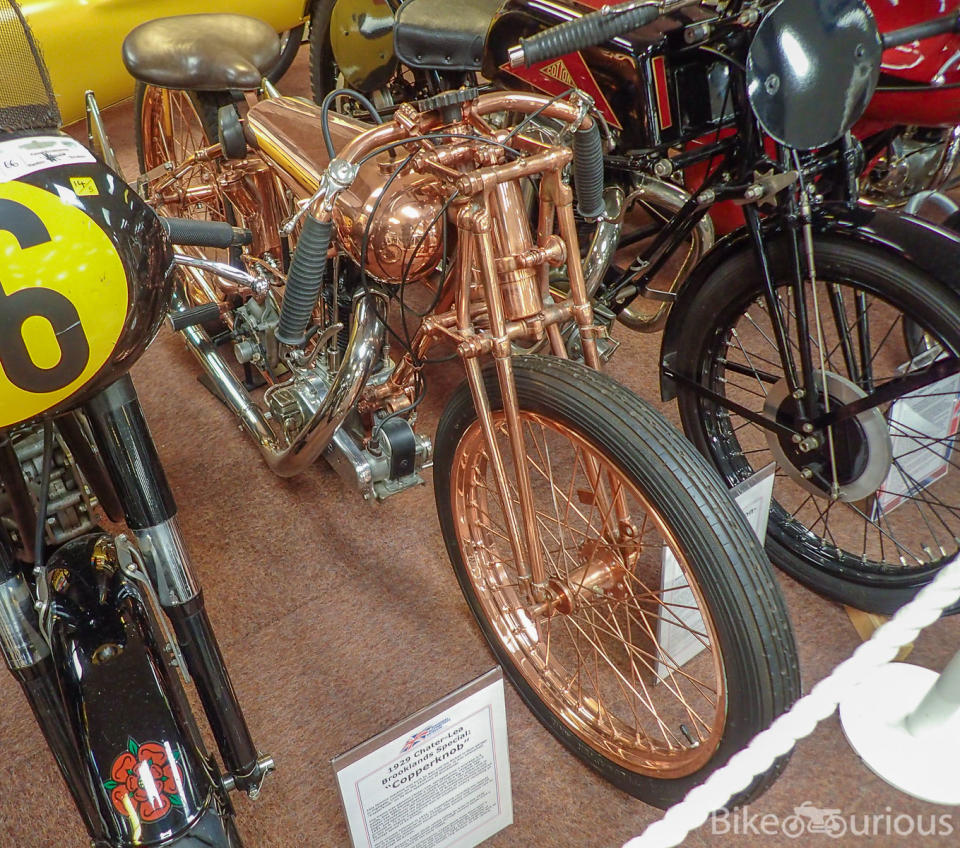
The tank of a '36 New Imperial Works Racer. The NMM says it's arguably "the most handsome machine of the thirties." It's definitely one of the most distinctive.⠀
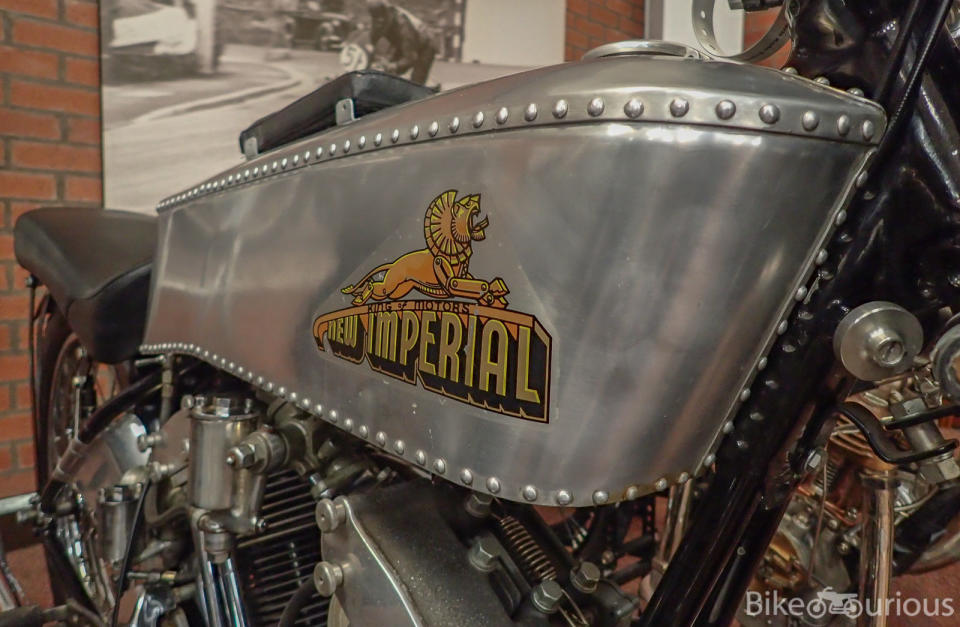
As you'd expect from a museum in England, there's a lot of love here for Norton. Here's the first prototype Norton built to see if their rotary motor had the chops for racing.
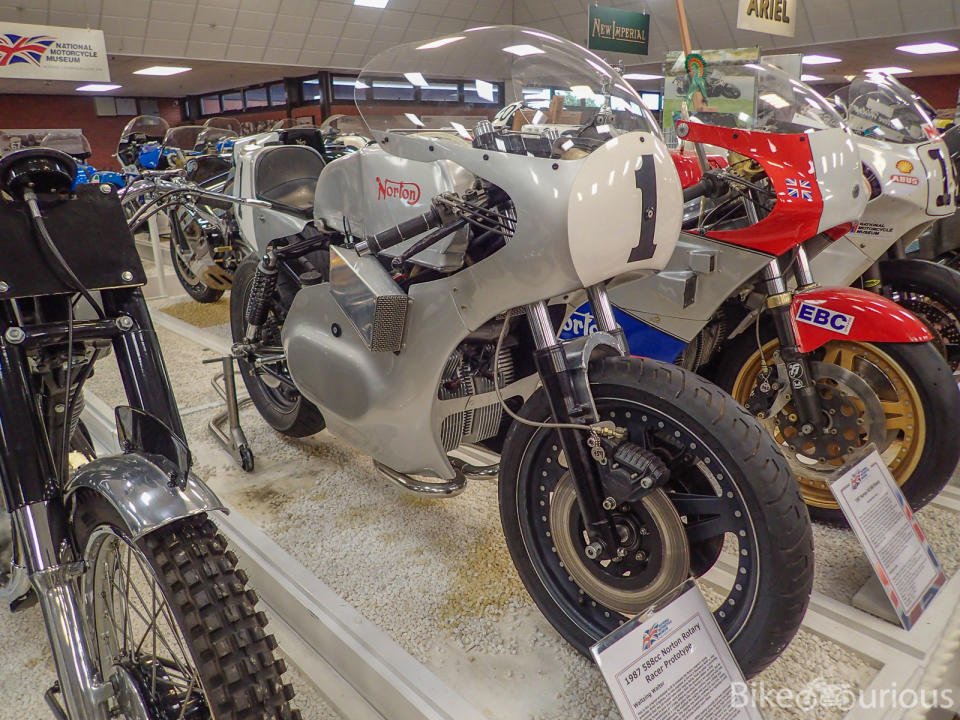
Impressively, this put down 125 hp after some modifications to a production motor that came out of a crashed cop bike. The stock motors were good for 85 hp.
Another one of my favorites is this 1962 Ariel Arrow modified for sprint racing. The work was done by British Sprint champion George Brown and his brother Cliff. Per the museum, George broke seven different British speed records with this bike in one weekend. In 1966, George was able to hit 122.45 mph in a flying start kilometer.⠀
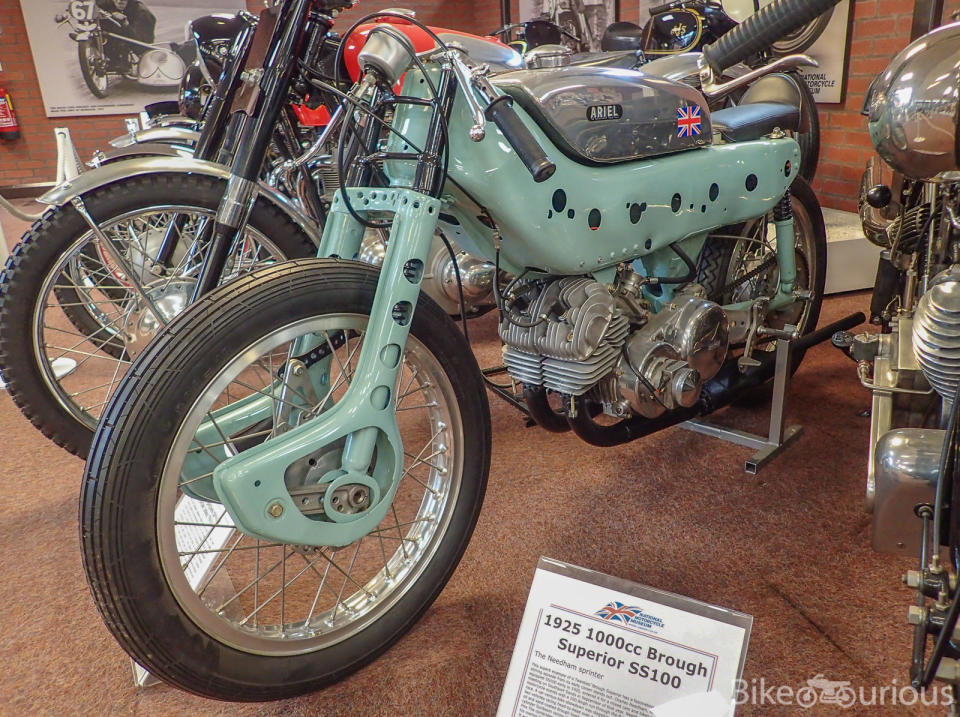
George Brown also built the "Super Nero", a supercharged sprint racer using a Vincent 1,000cc motor that was eventually replaced with a built 1,300cc powerplant.
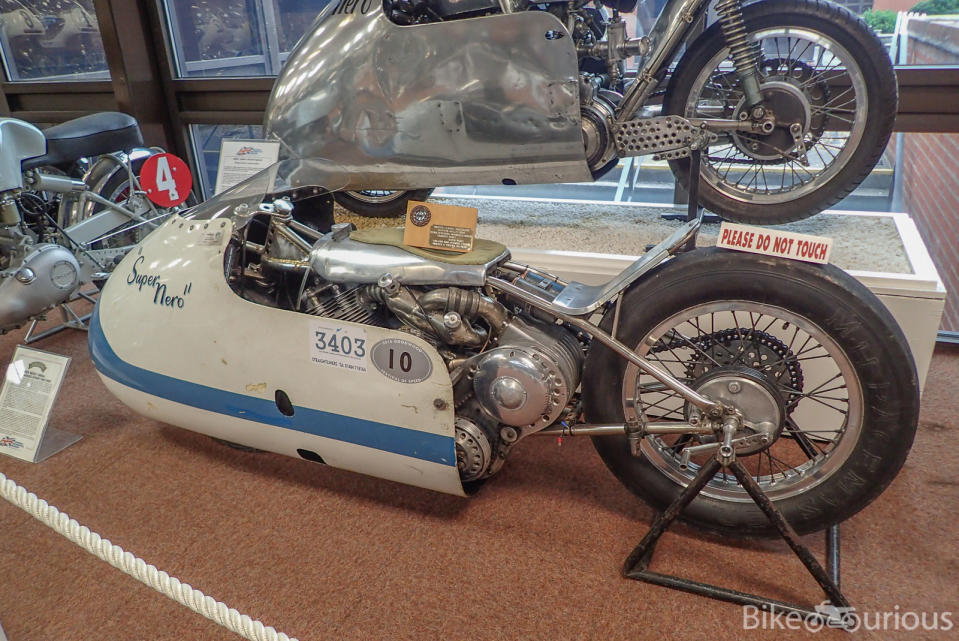
The Velocette Venom was famous for being the first bike to average over 100 mph over a 24-hour period. This bike is the actual one that set the record back in March of 1961.
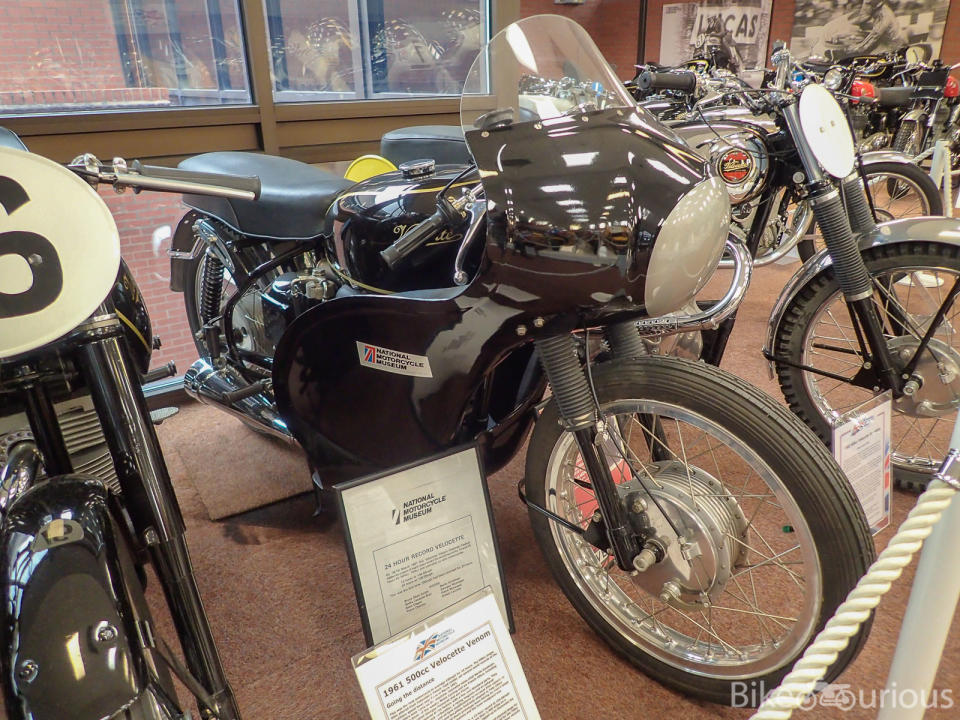
I save the fastest for last. This is the Gilette Mach 3 Challenger, the fastest motorcycle of the 20th century thanks to a 330.639 mph run at the Bonneville Salt Flats.
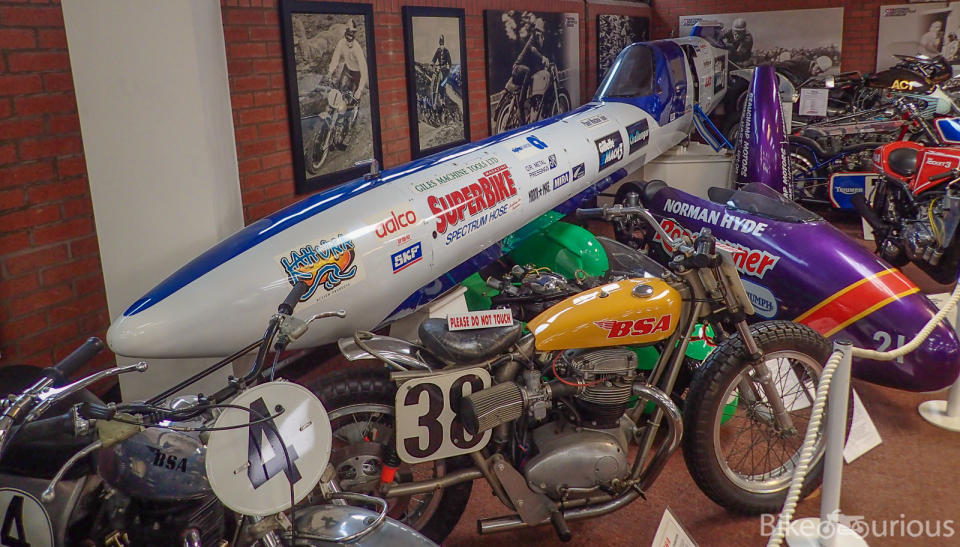
Unfortunately, to set the world record the bike had to run in the opposite direction within an hour and that proved impossible due to tire issues and salt condition. Still, it must have been quite a sight:
The photos above show you a small fraction of what the National Motorcycle Museum has to offer. The most incredible aspect of it all might just be that in 2003, a cigarette started a fire that destroyed 380 bikes and caused over £14 million in damage. The museum responded with a £20m investment and within 15 months they were open again. 150 of the damaged motorcycles were restored for the re-opening.
After a quick stop in Oxford, we make our way toward London.
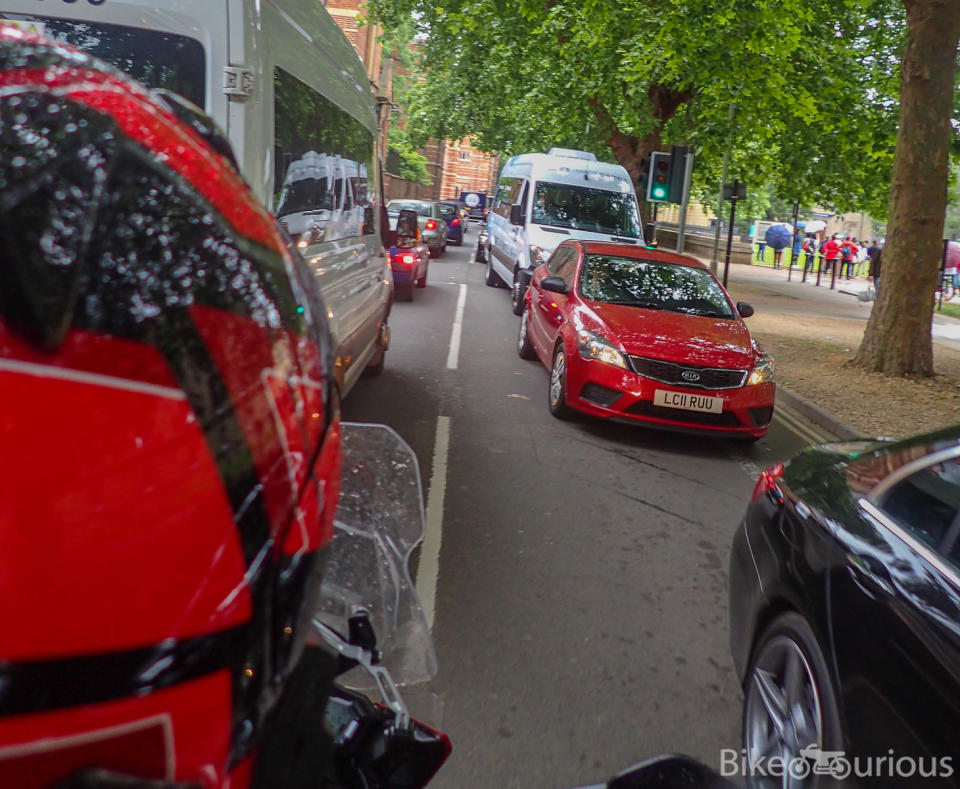
Our lucky streak with the weather ends and we are forced to deal with a torrential downpour to make up for the fact that we haven't had any real rain all trip.
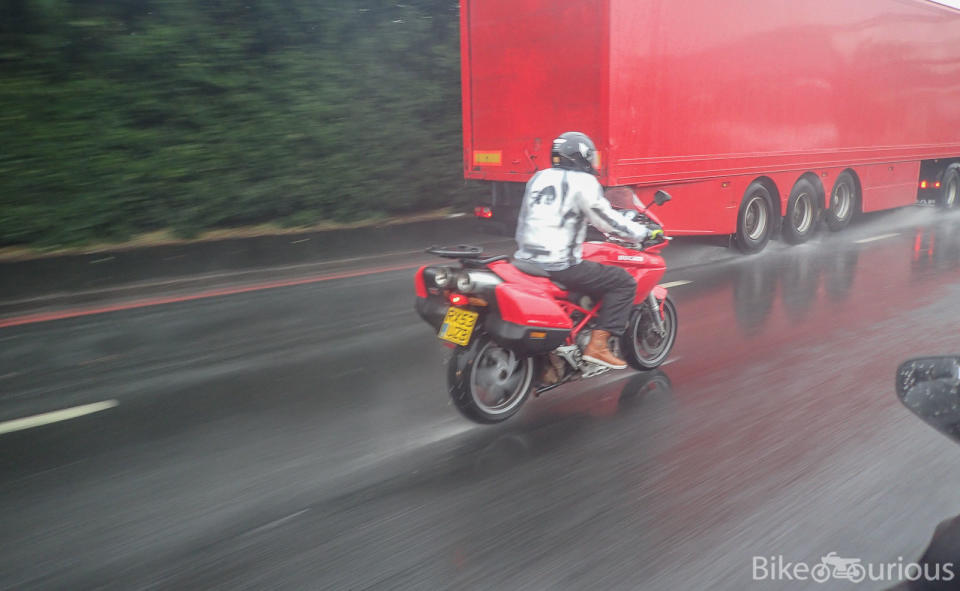
We spend some time in London to see the usual sights. As our trip comes to an end and we make our way back to return the Triumph, we randomly ride by the headquarters of The Bike Shed. I take it as a sign that we have to pop in for a moment.
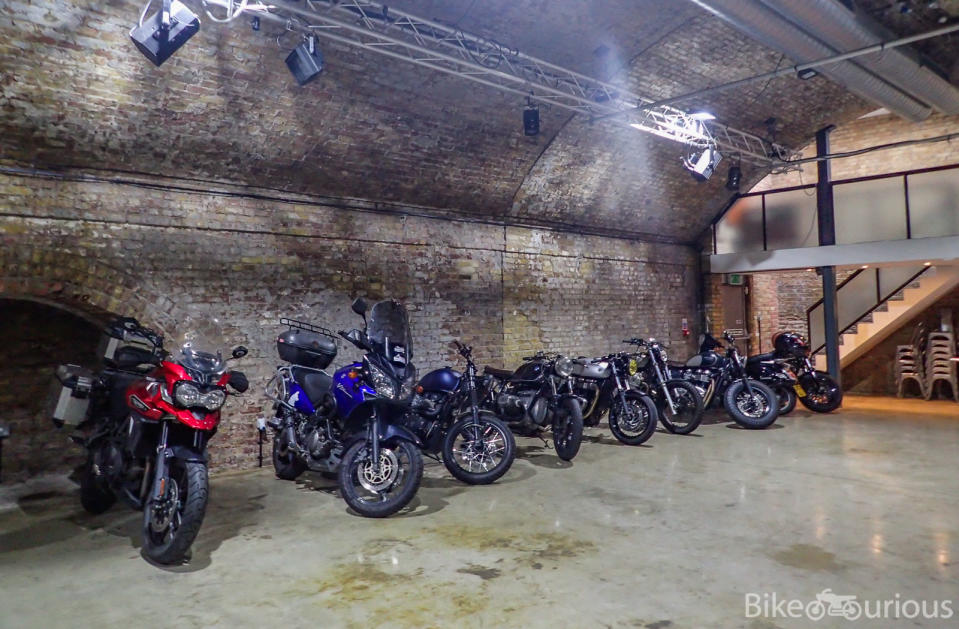
We get lunch in the restaurant and I enjoy a bottle of the theme-appropriate Old Engine Oil black ale. The Bike Shed also has a classifieds section on their site and some of the bikes are on display at headquarters.
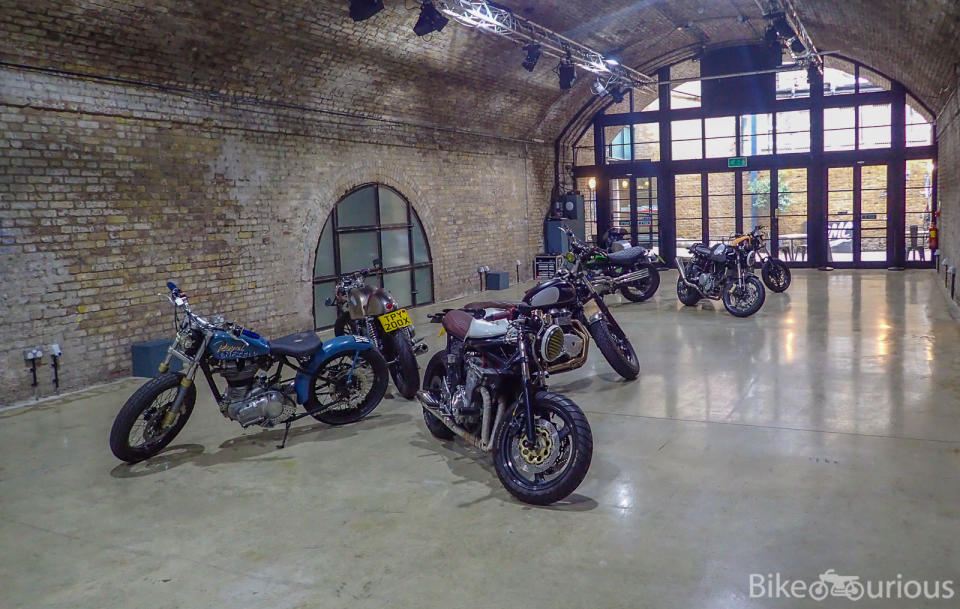
My favorite of the group is Wrenchmonkee #69, a 2003 Harley-Davidson Sportster 883.
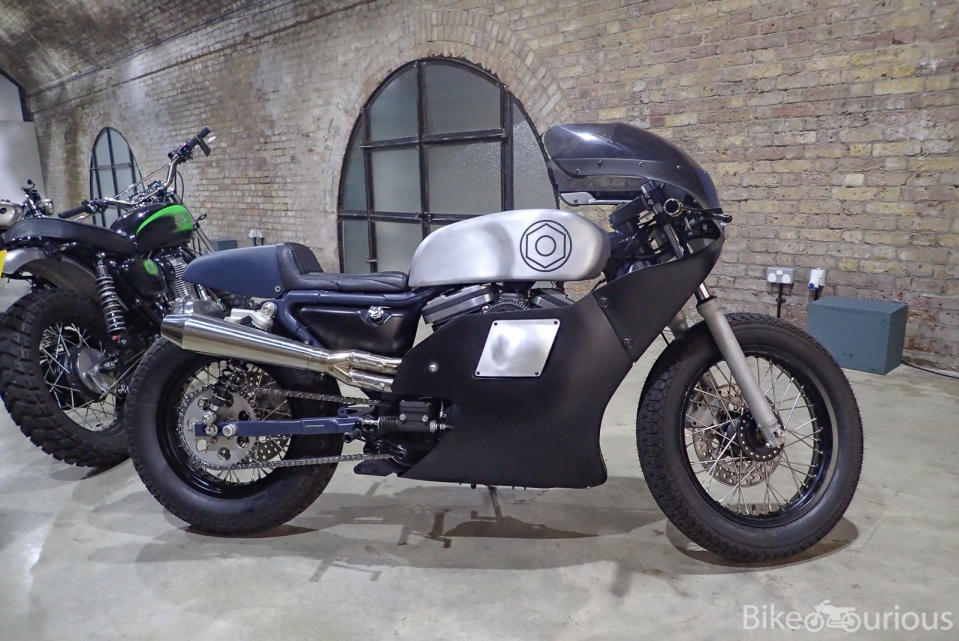
Alas, our time in England must come to a close, so we leave The Bike Shed the same way we entered...through tables of diners.
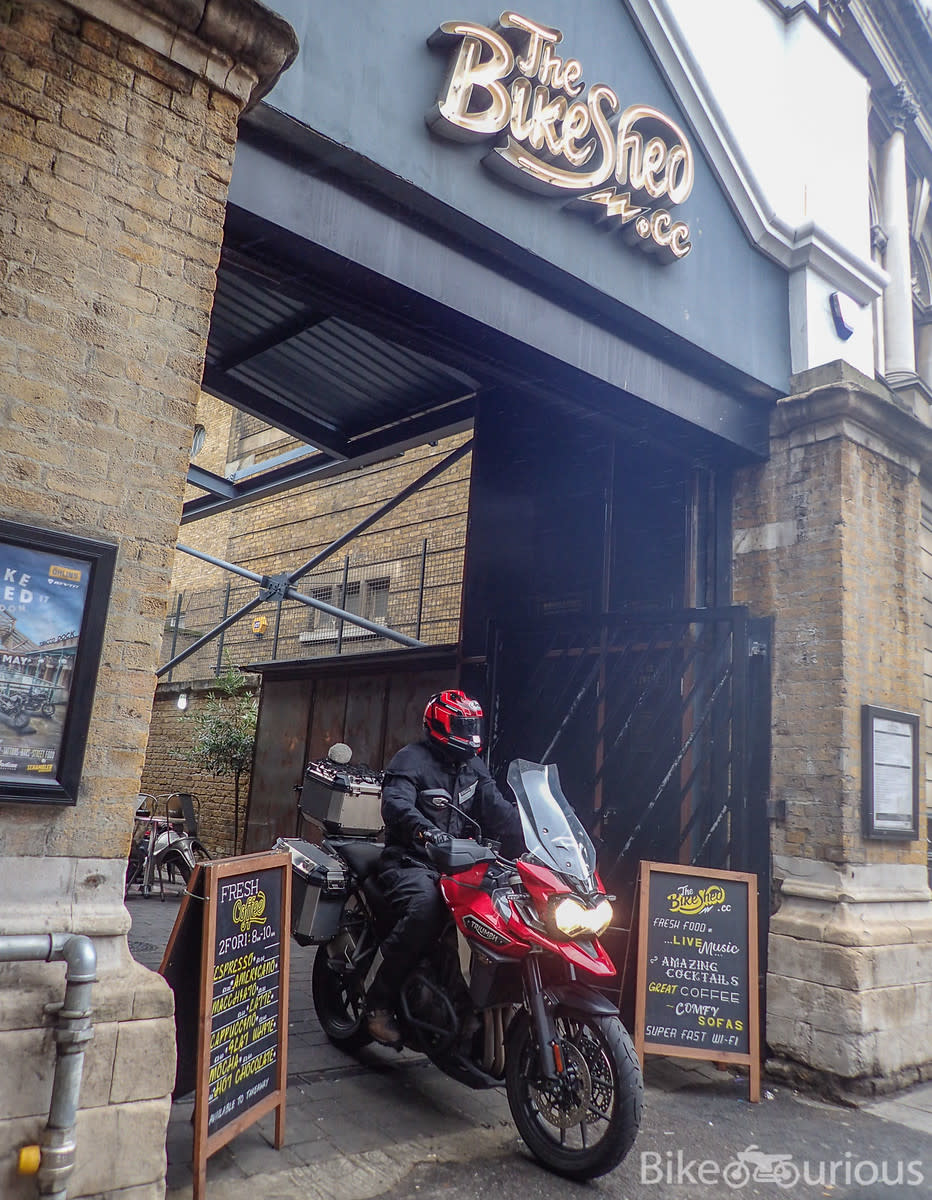
We make our way back to the drop off point and it's time to unpack 138 liters worth of storage. At the beginning of this story I mentioned that there was no higher purpose to this trip - we just wanted to explore new countries. After 10 days, it's clear to me that we need to come back and for much longer.
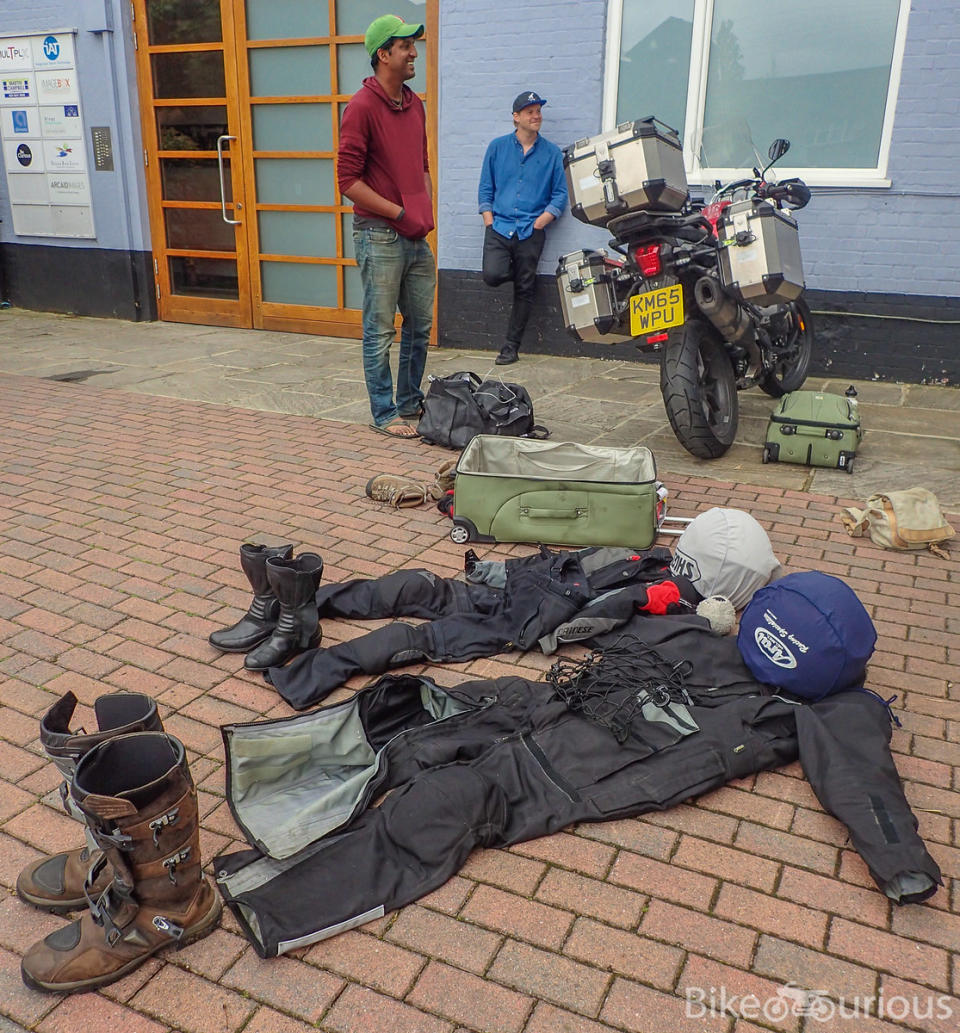
The motorcycling culture out here is outstanding. Lane splitting is the norm, so car drivers (and most bus drivers) expect you and make room for you. Lots of riders use bikes as daily transportation instead of just weekend toys, so motorcycles are more commonplace and accepted. You don't get people who see you in gear and immediately feel obligated to tell you about their uncle's cousin's stepson who got hurt in a motorcycle accident 7 years ago. Instead, you get tales about wonderful trips, recommendations on roads to take, and introductions to other motorcyclists.
One of my favorite days of the trip was a visit to a vintage track day that I only discovered because our bed and breakfast host saw that we were on a bike and told us we should check it out because her son was racing. Sure, the weather isn't ideal (we got lucky), but the community is great. Now if they could just do something about those speed cameras...

 Yahoo Autos
Yahoo Autos 
